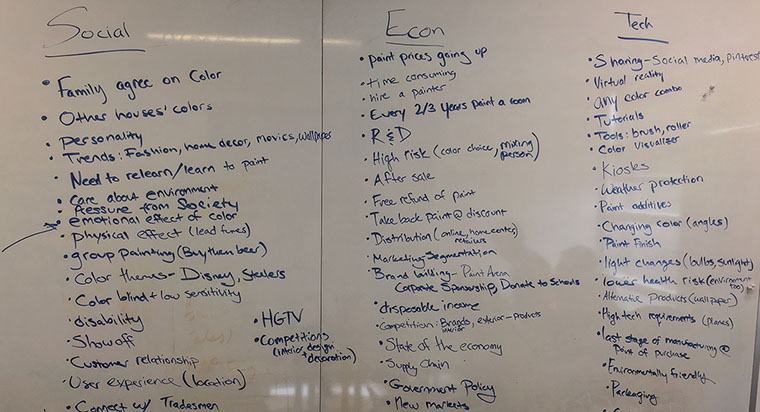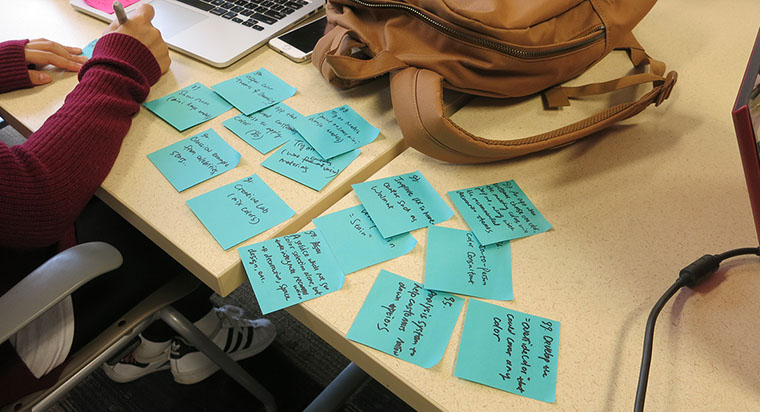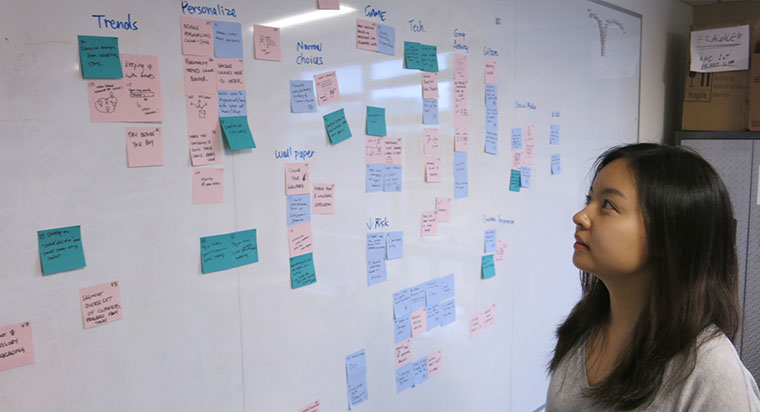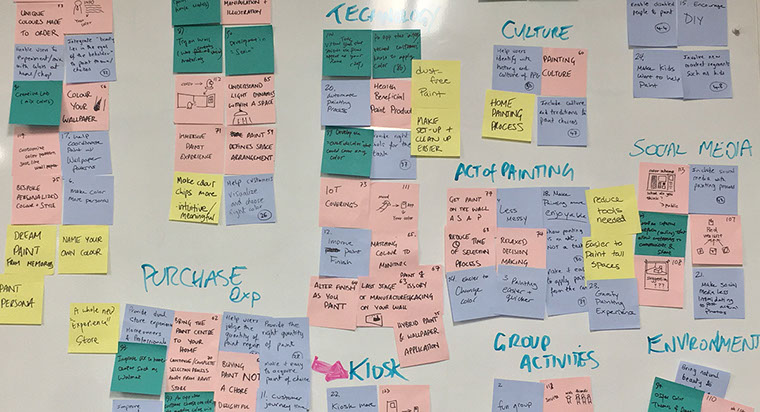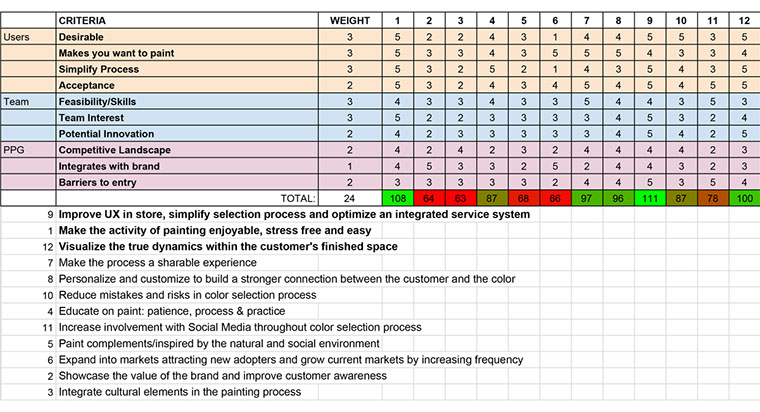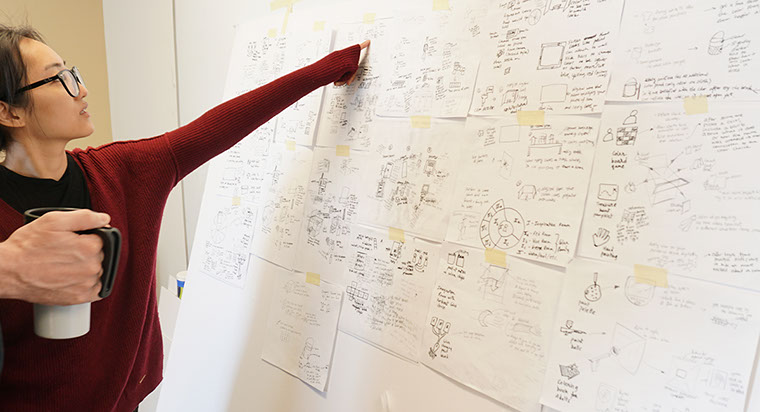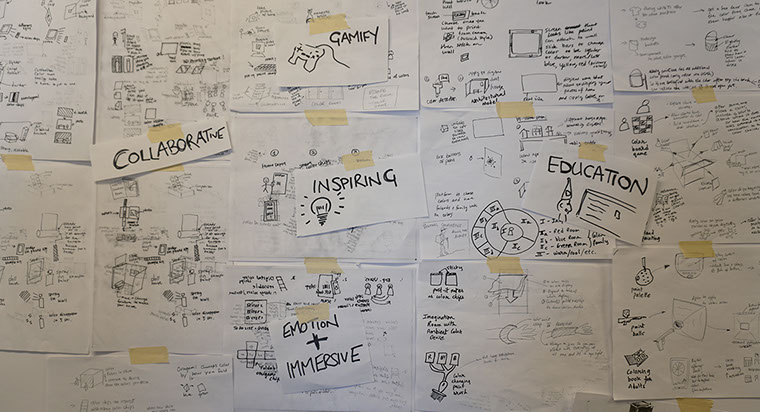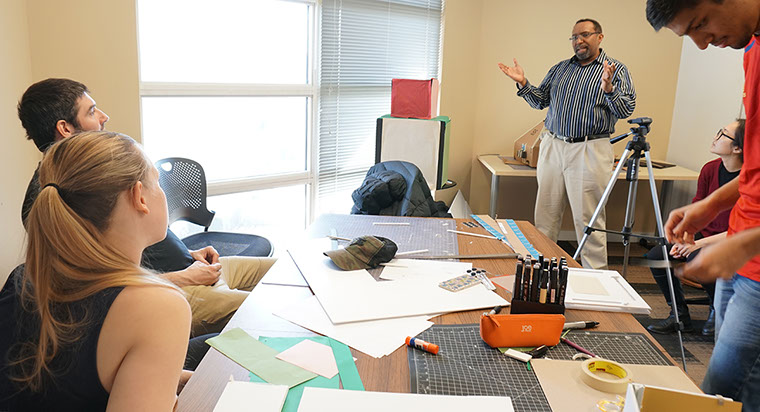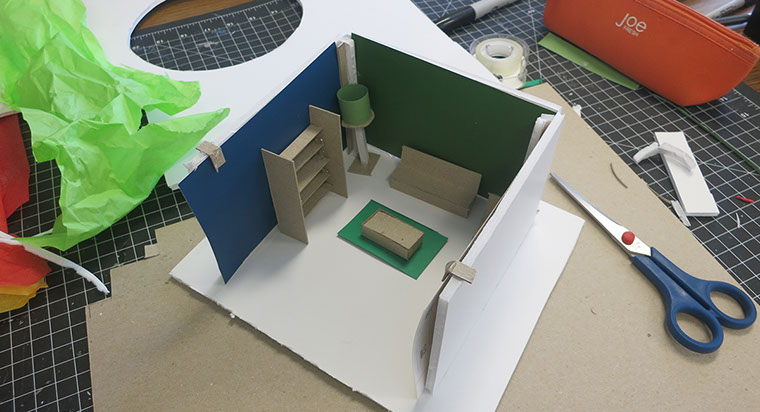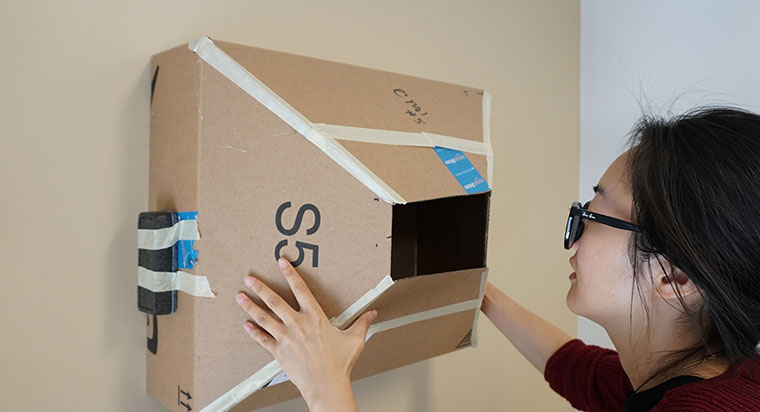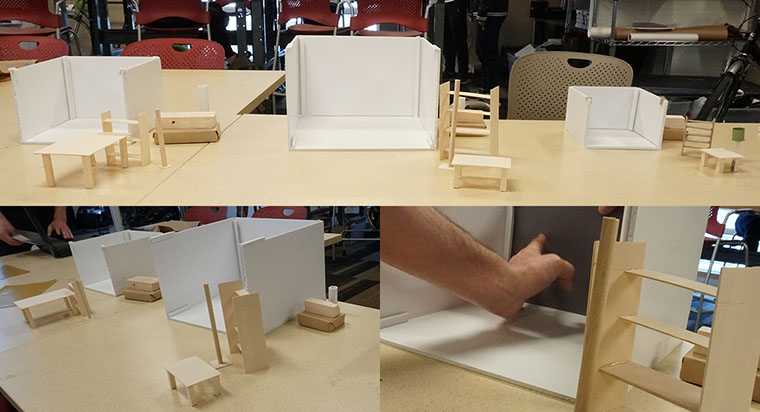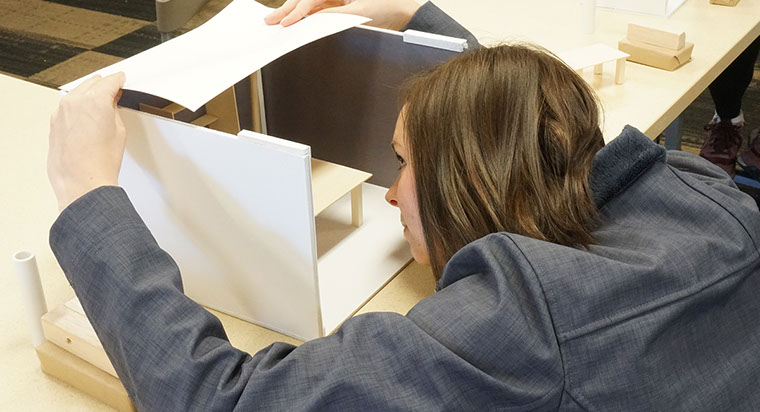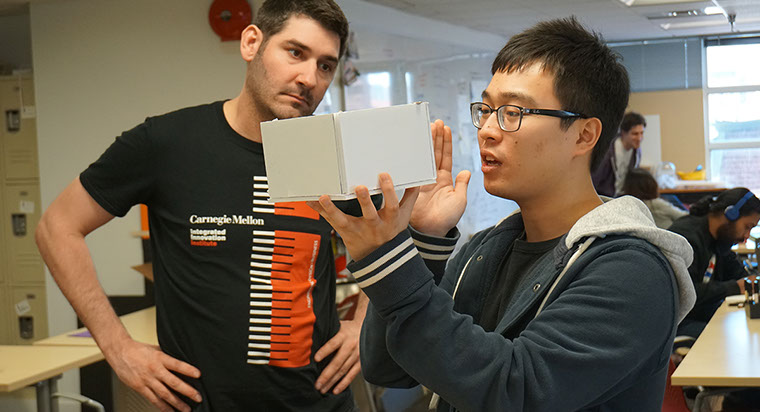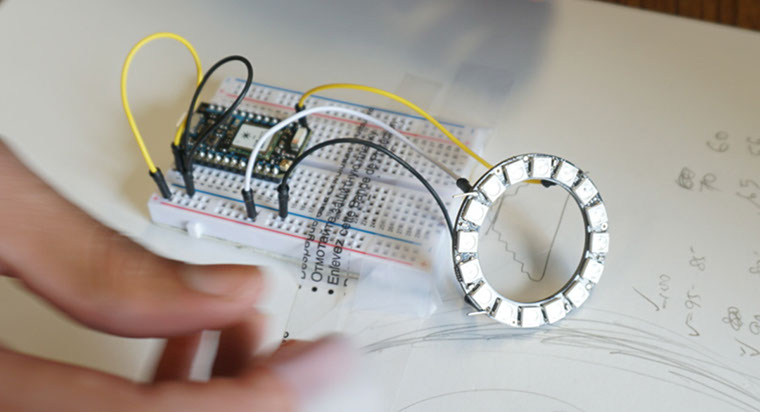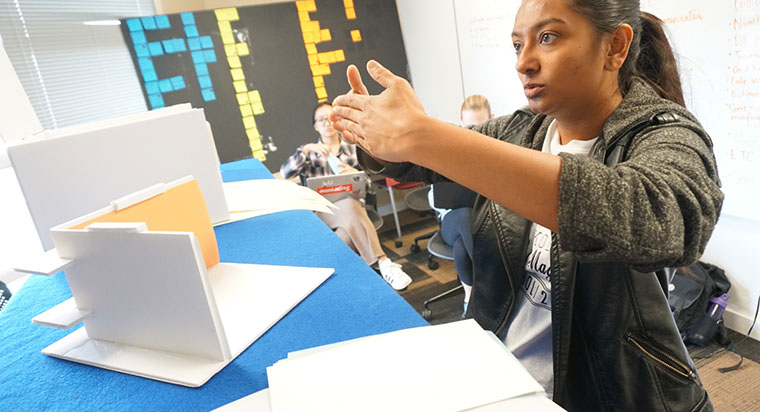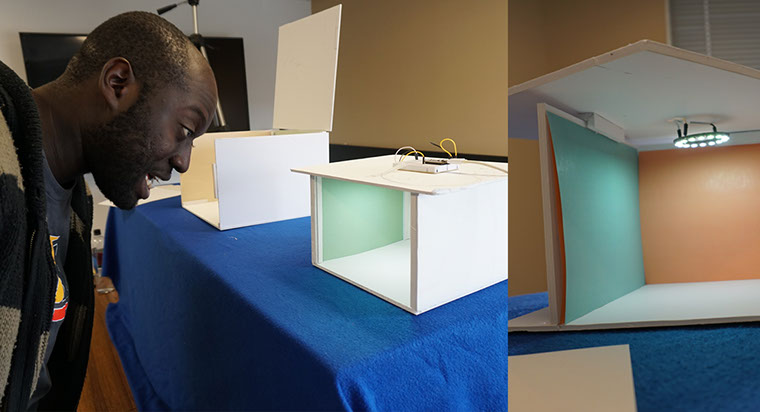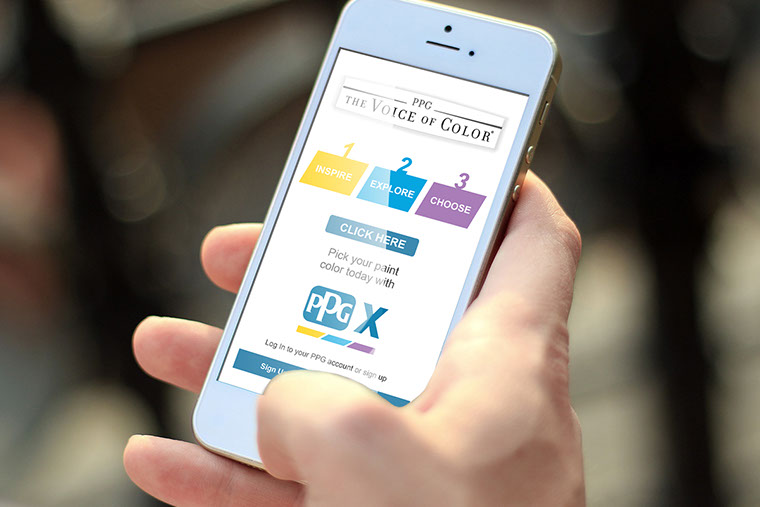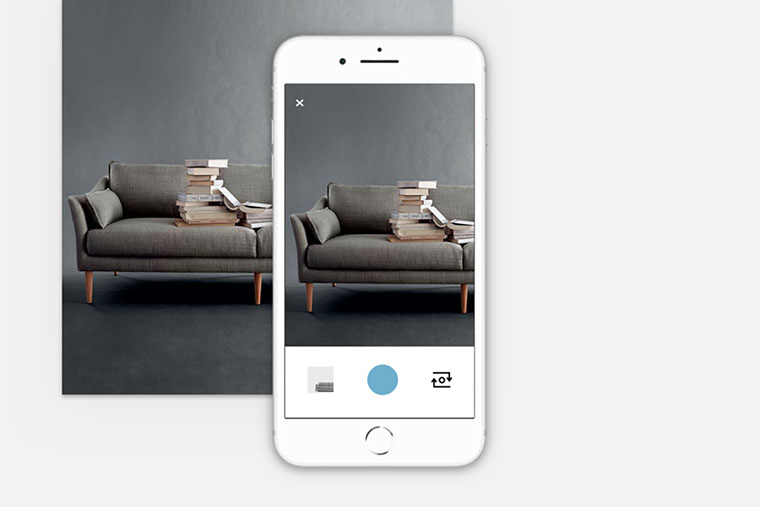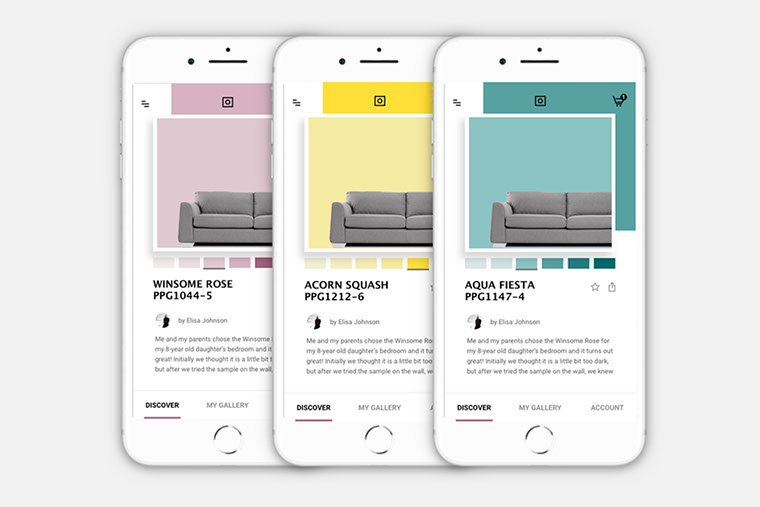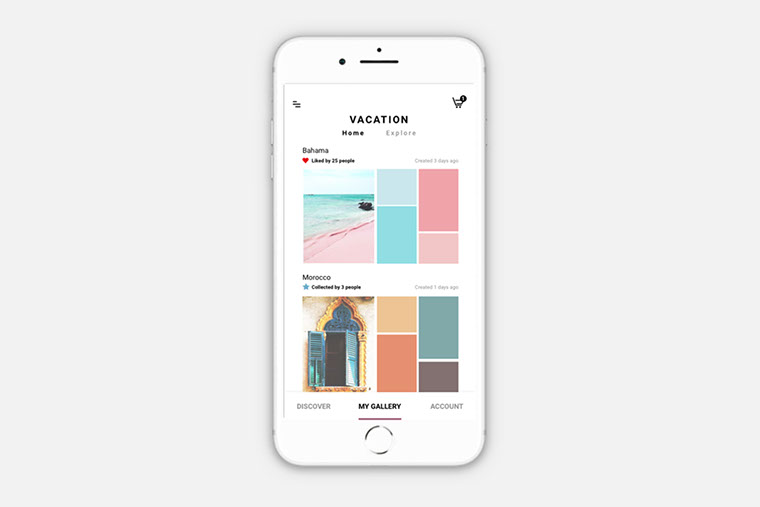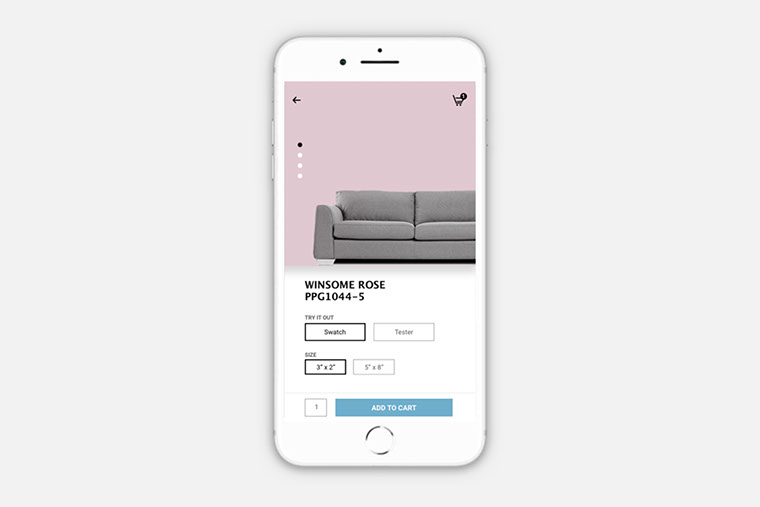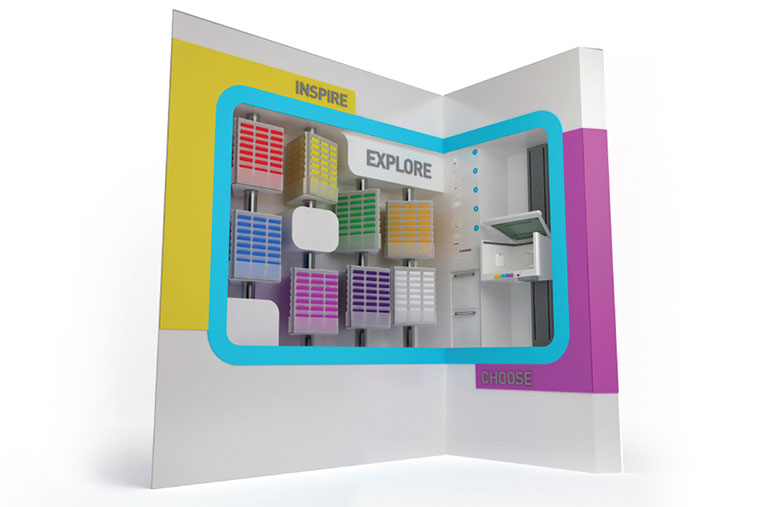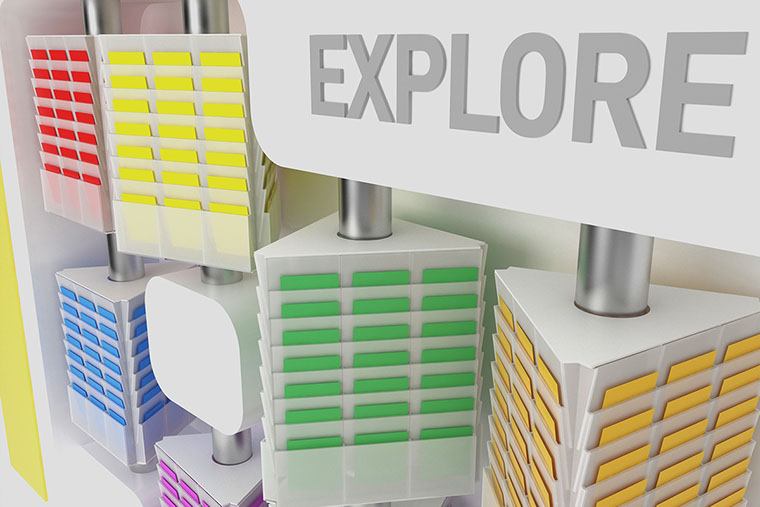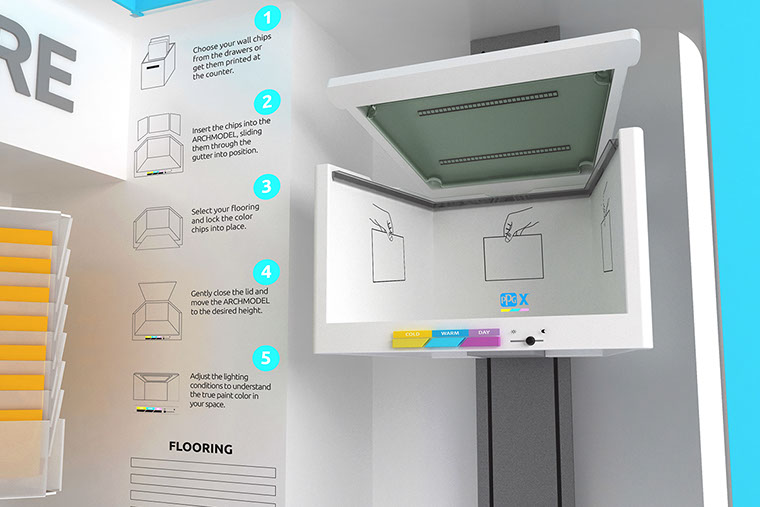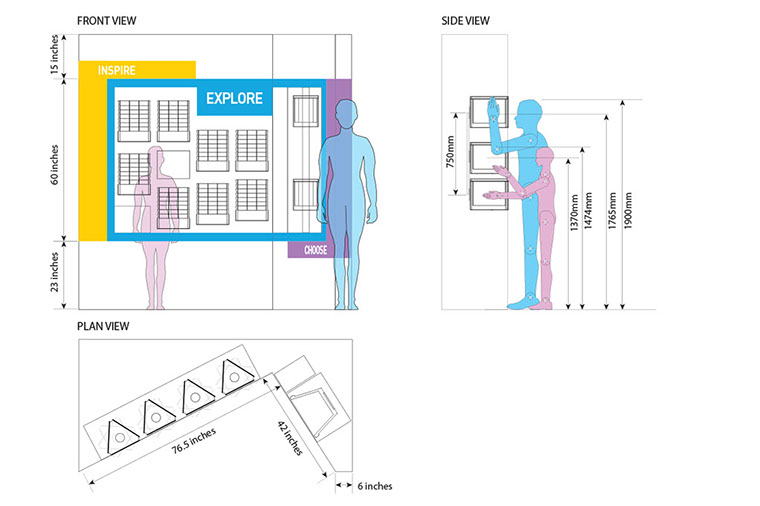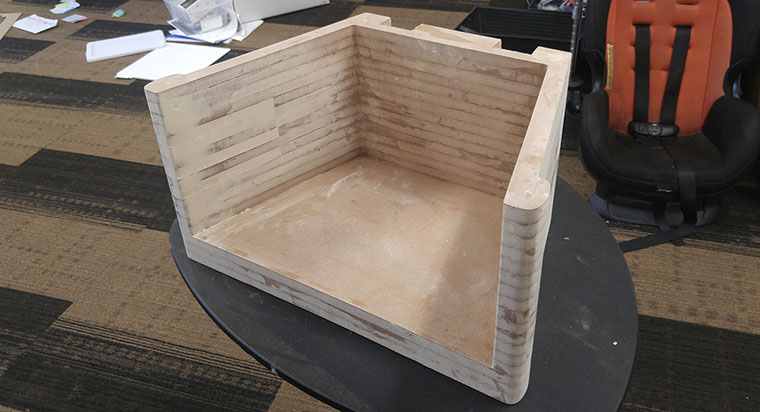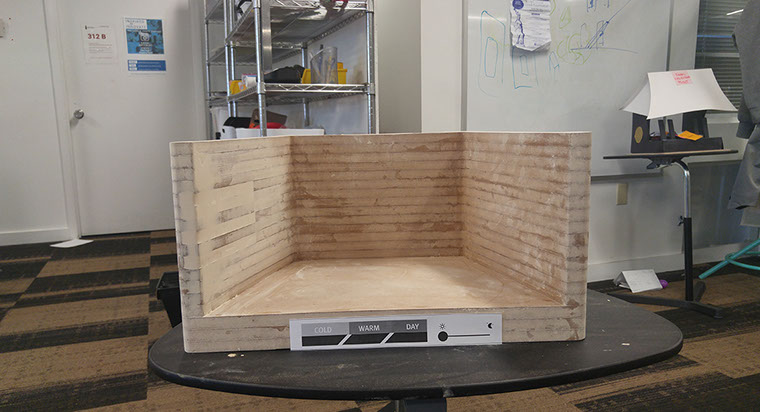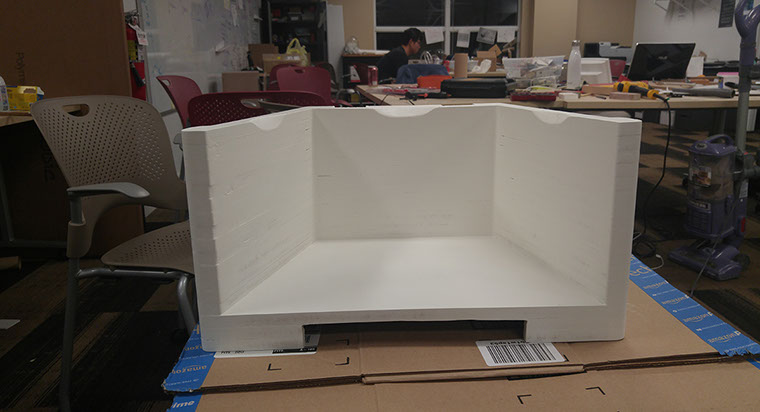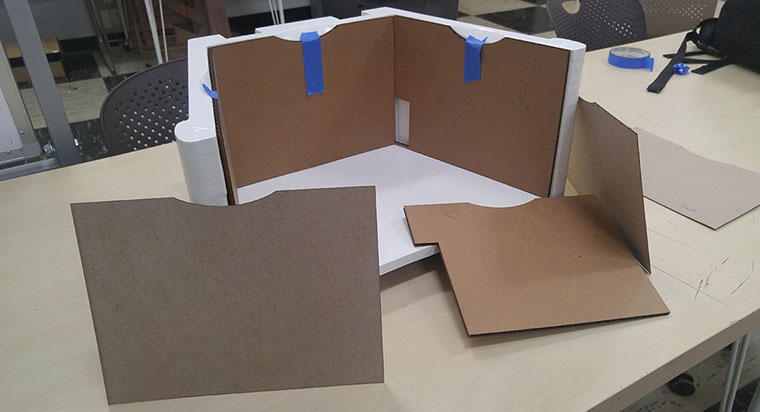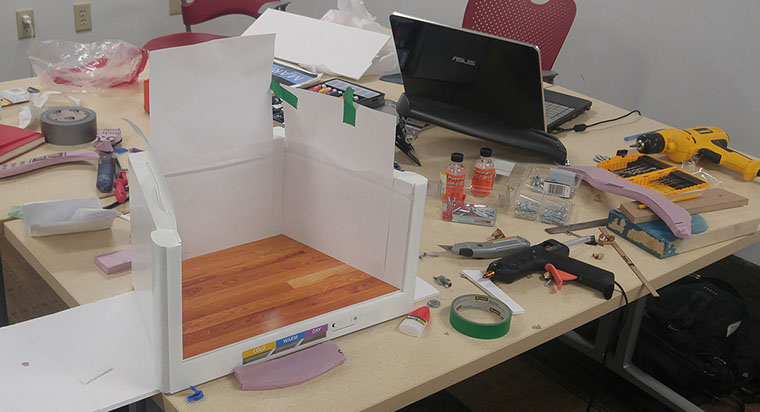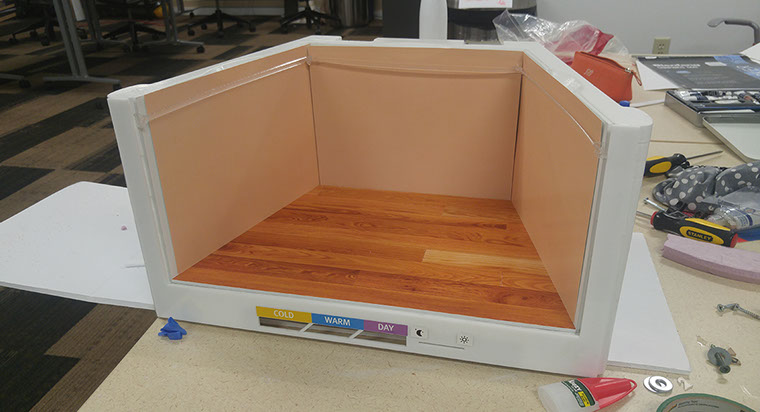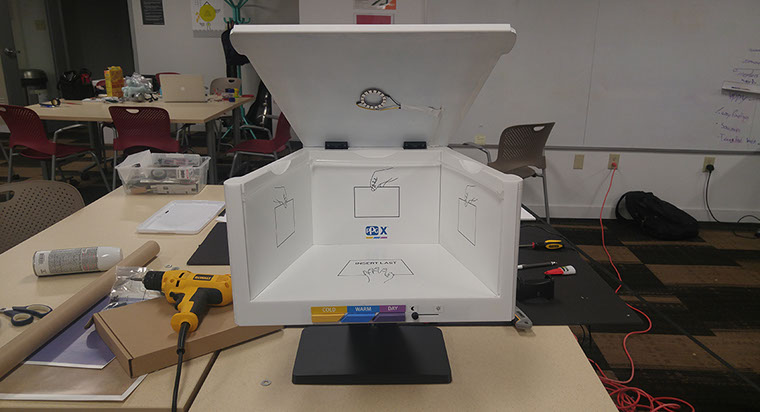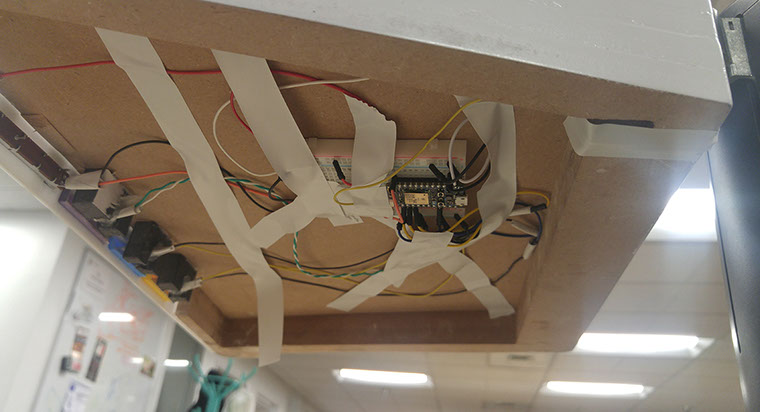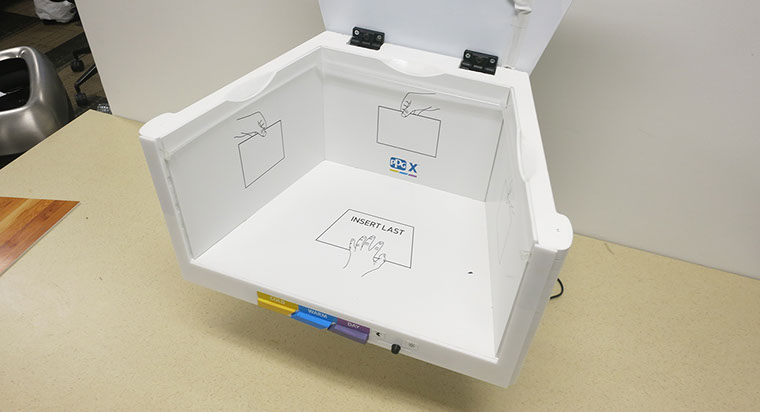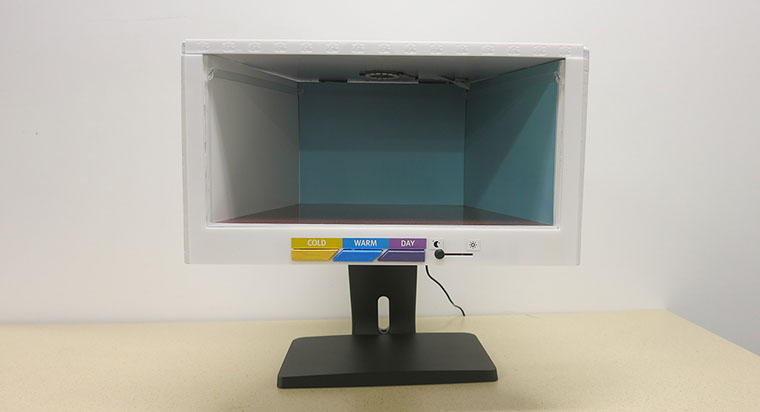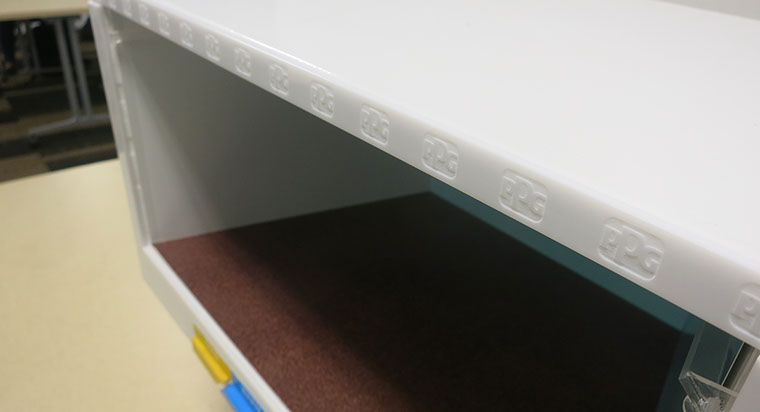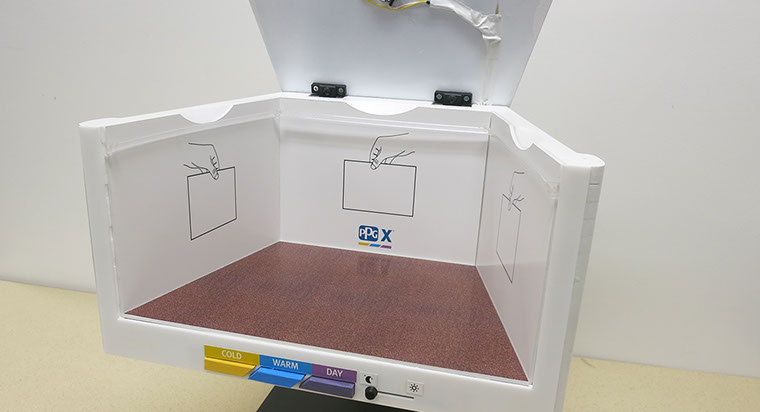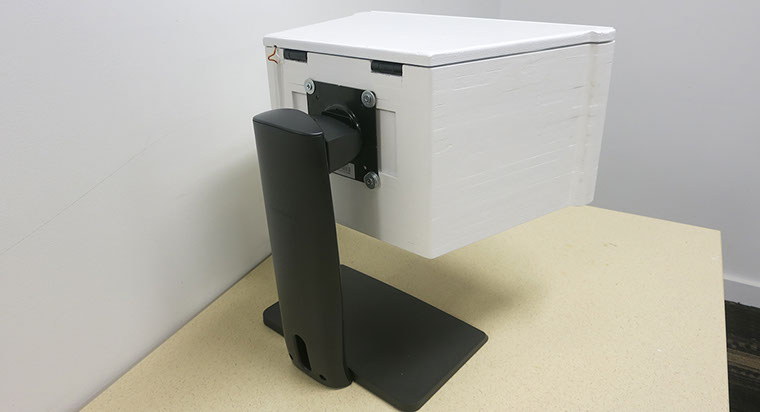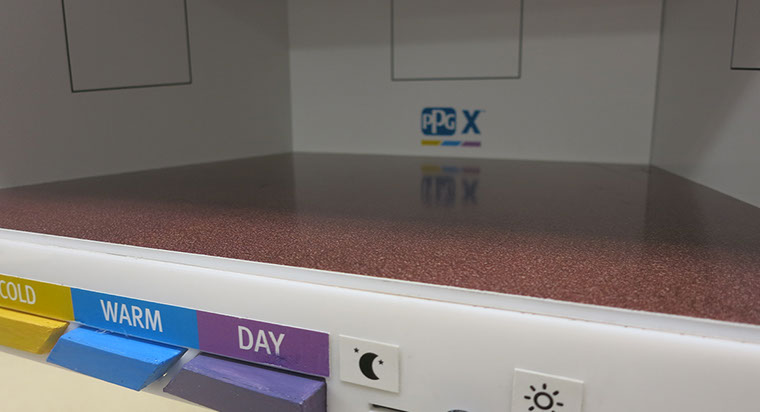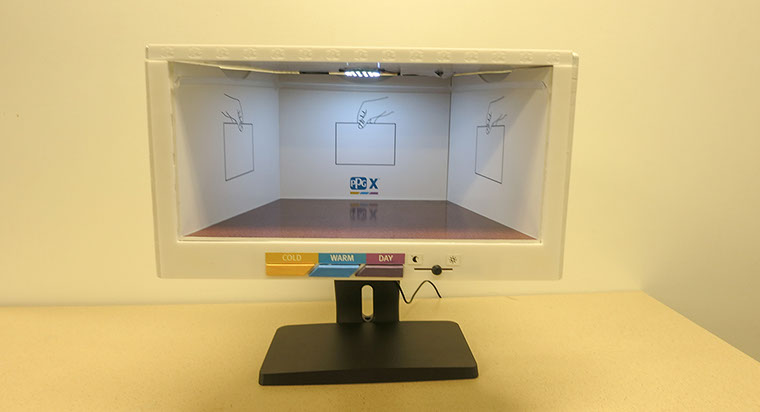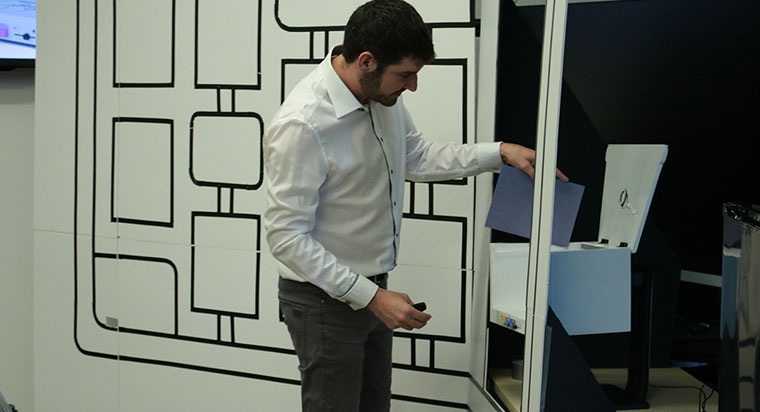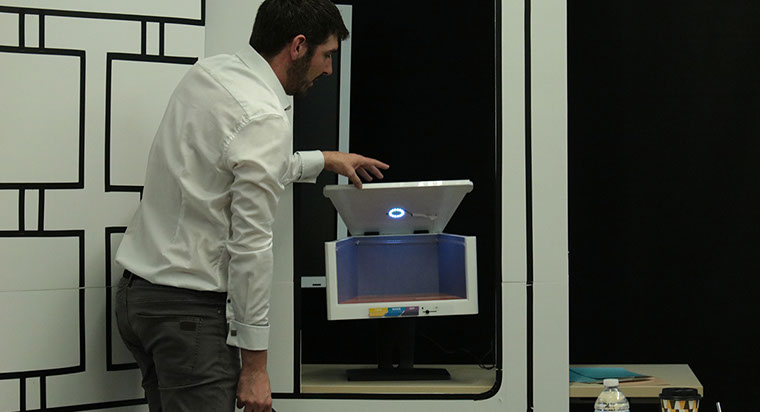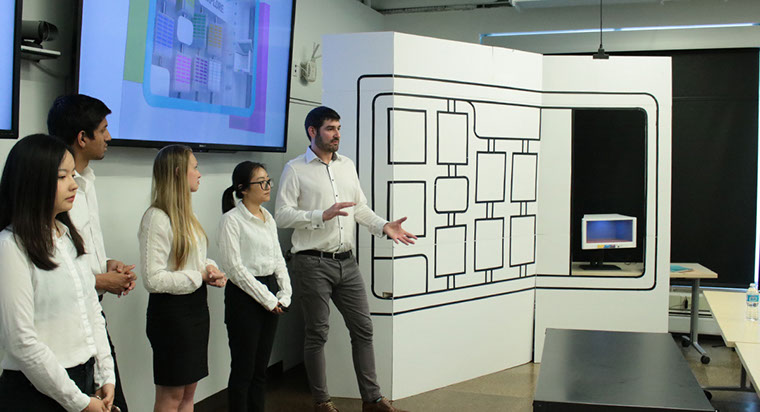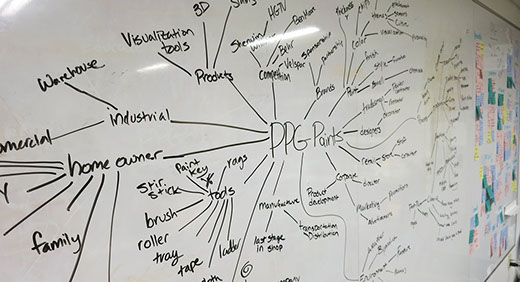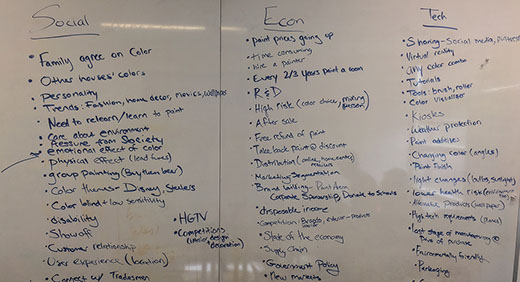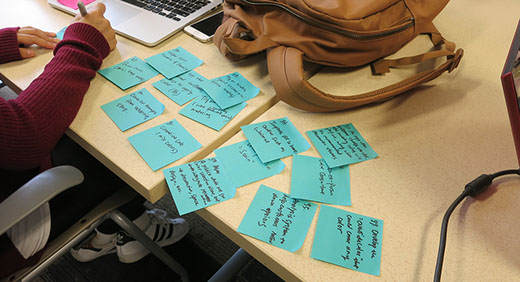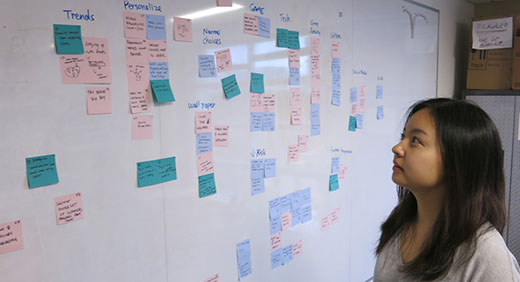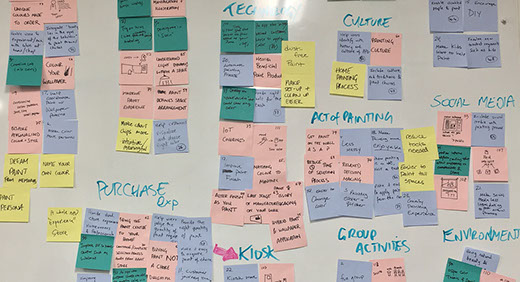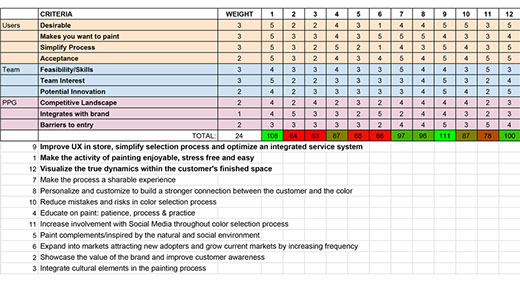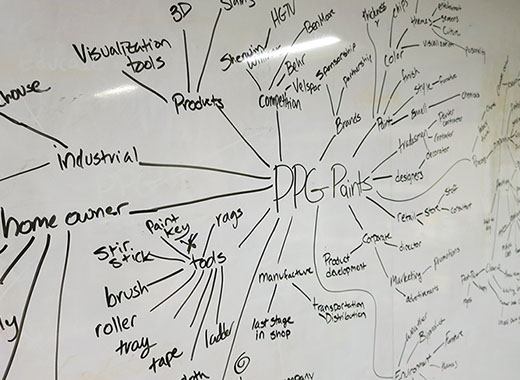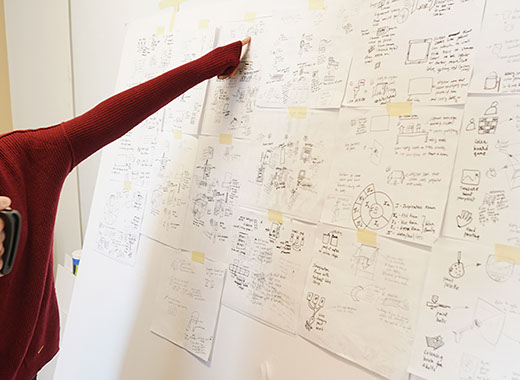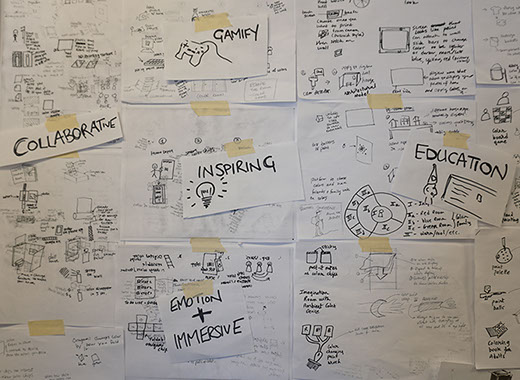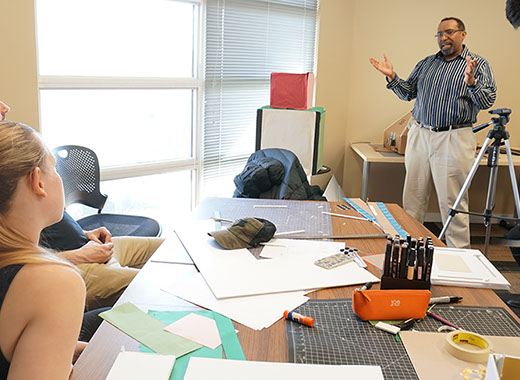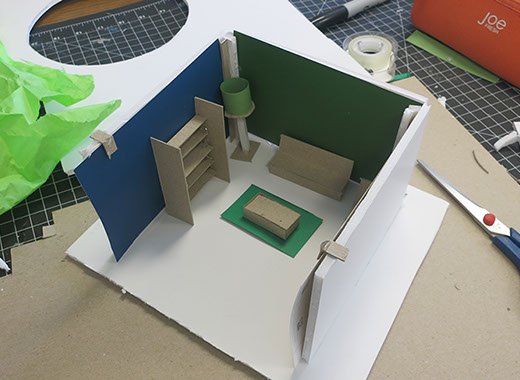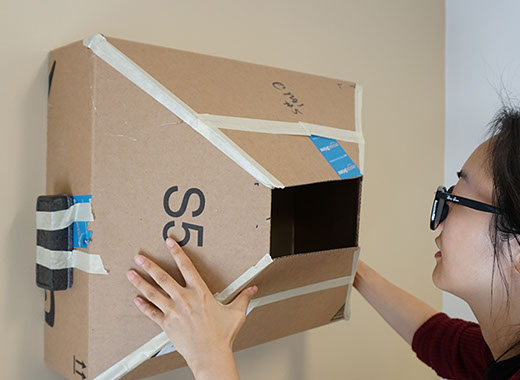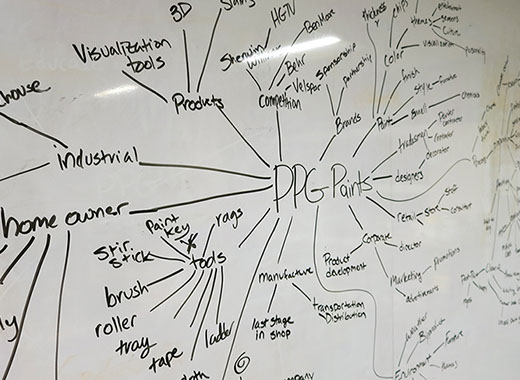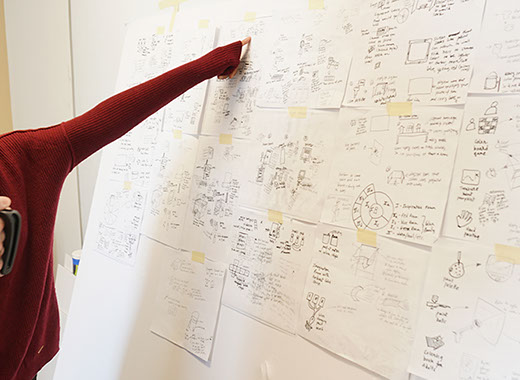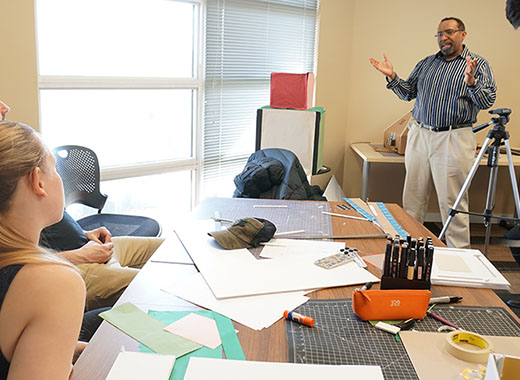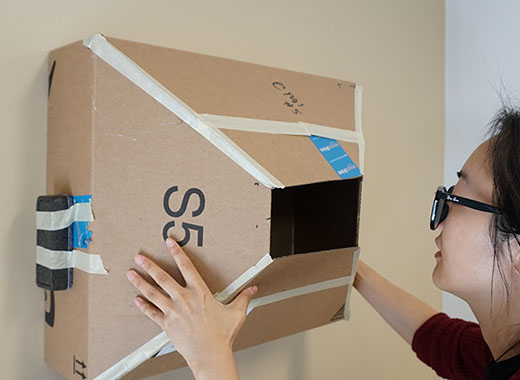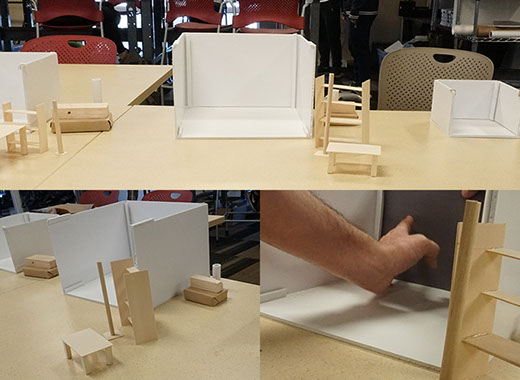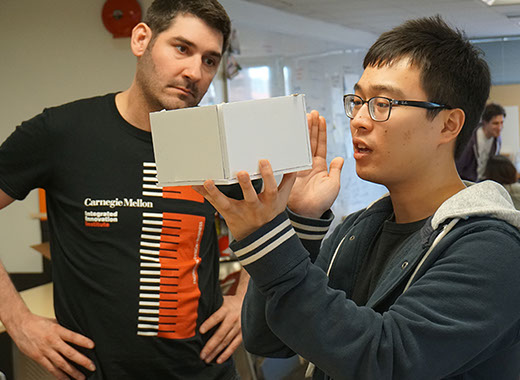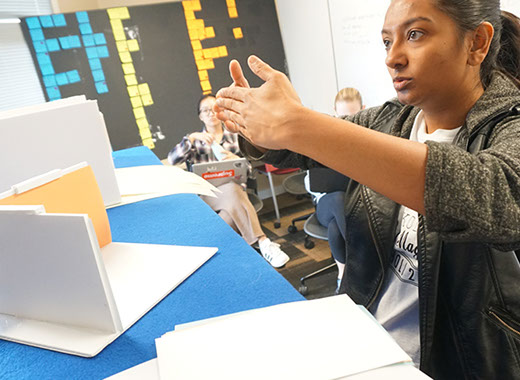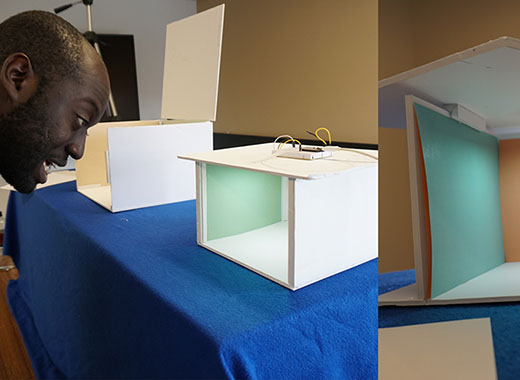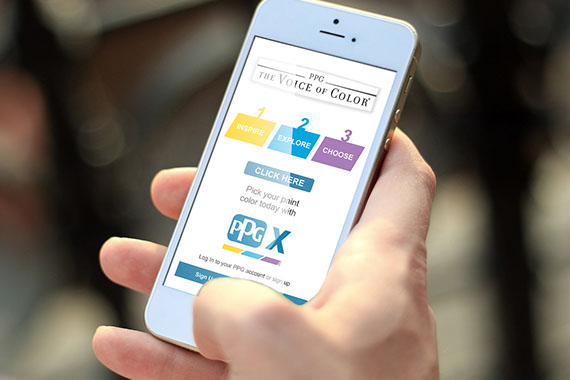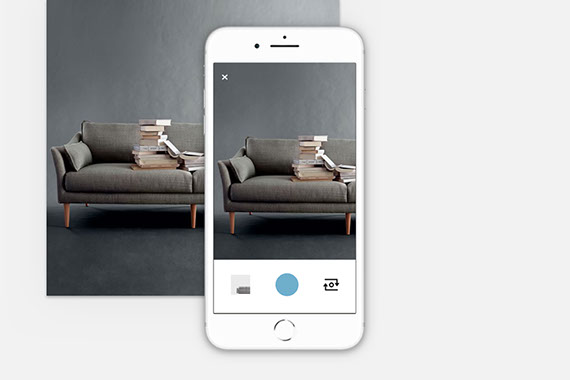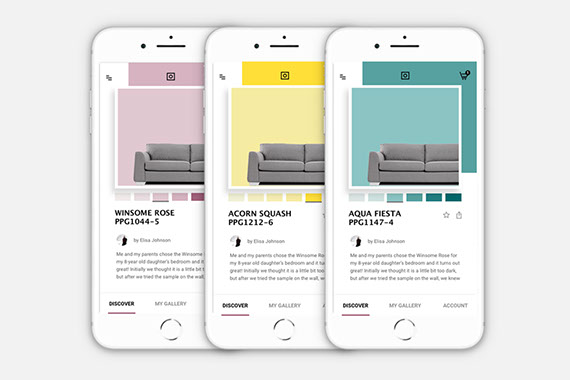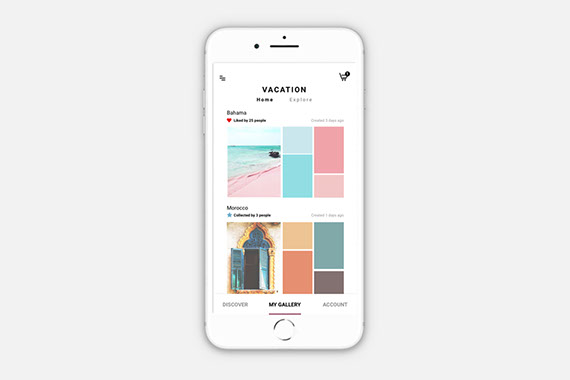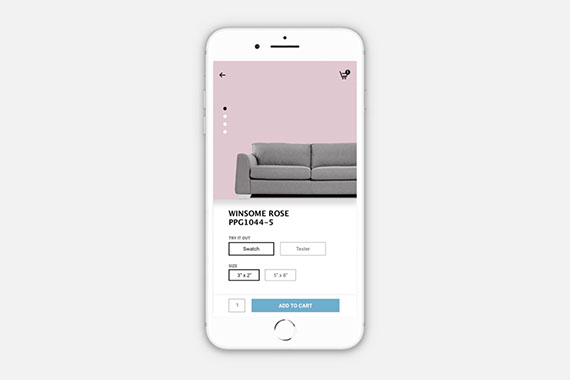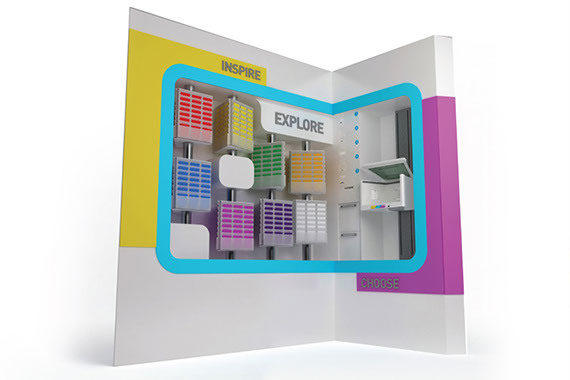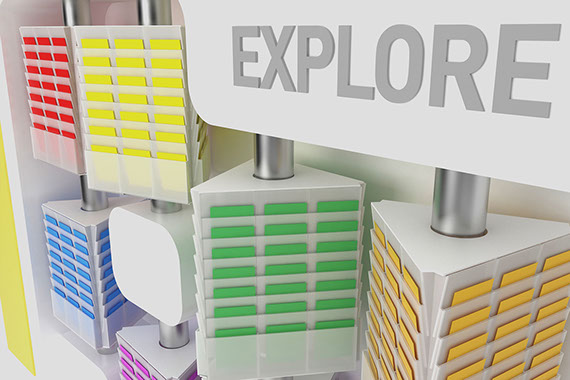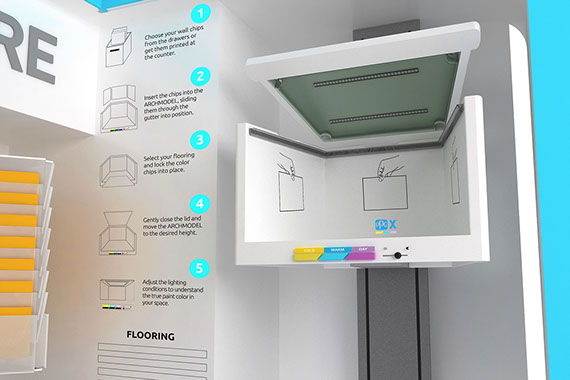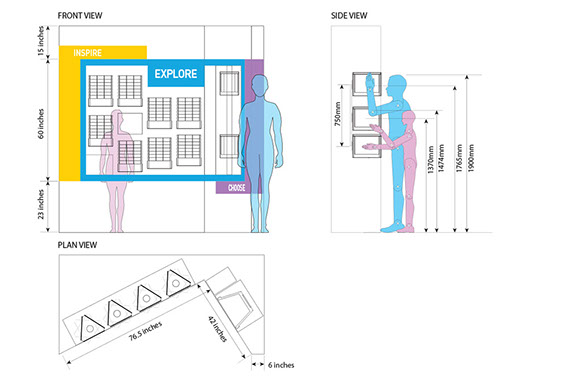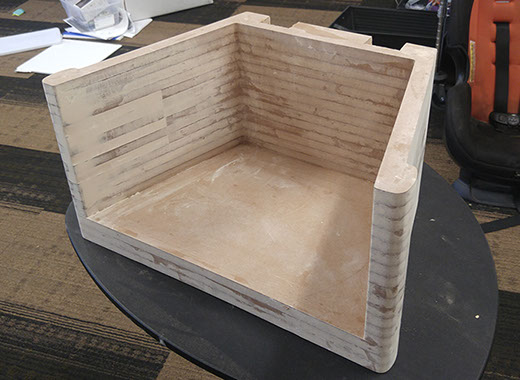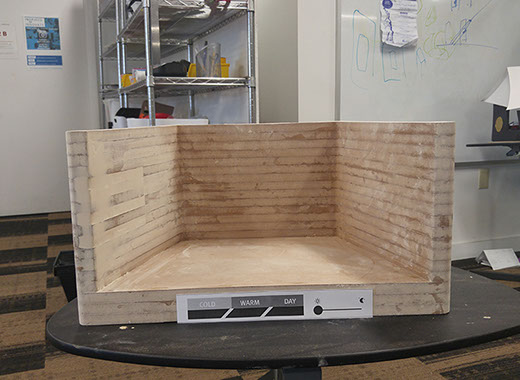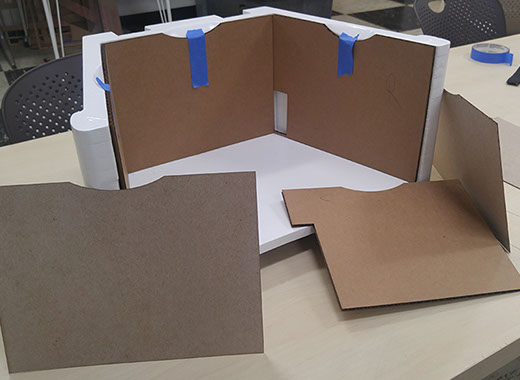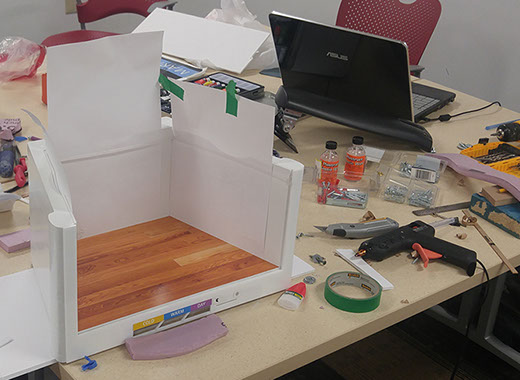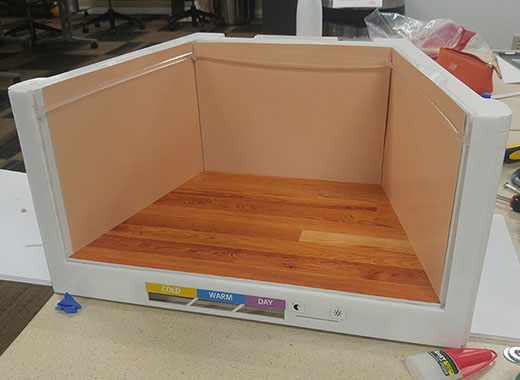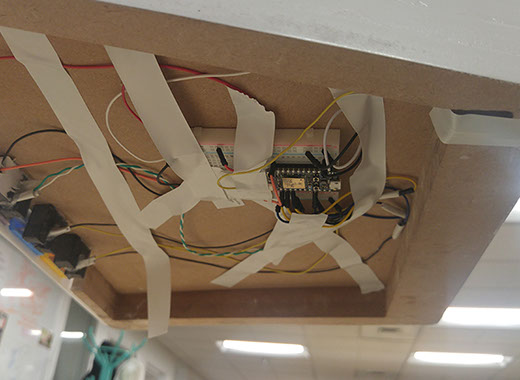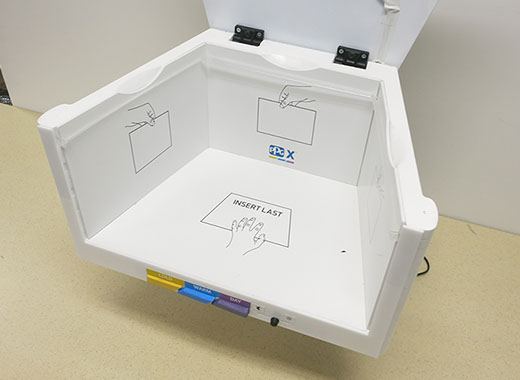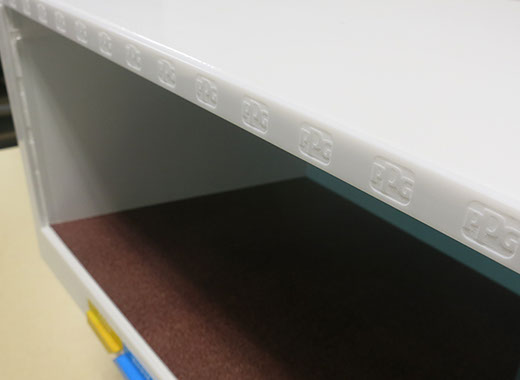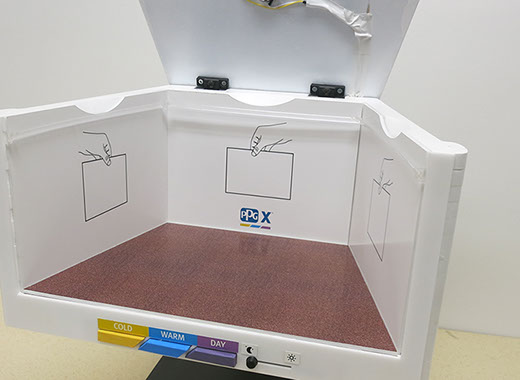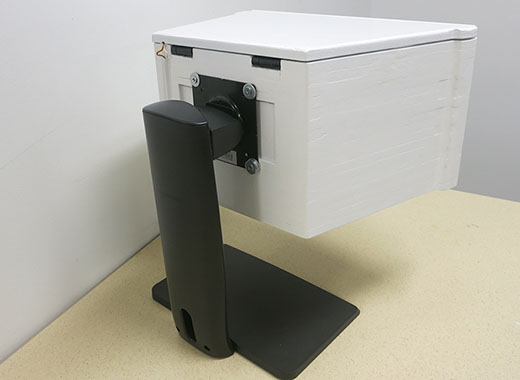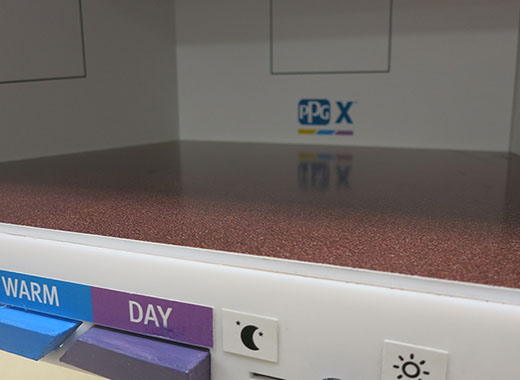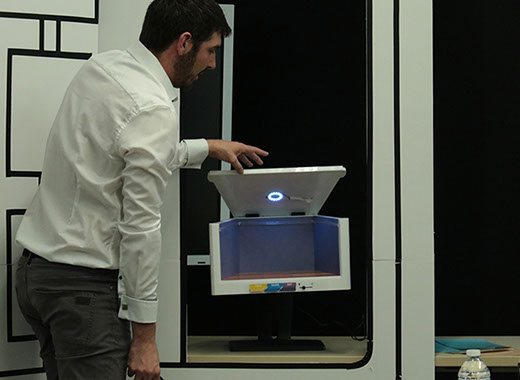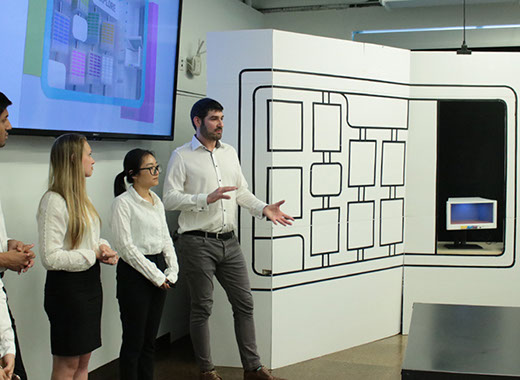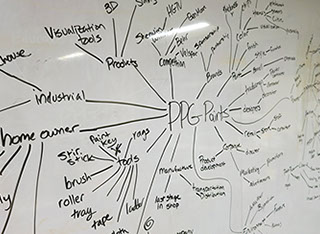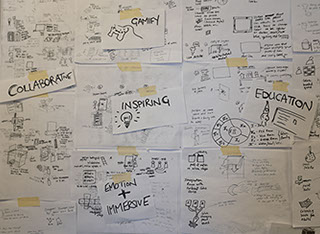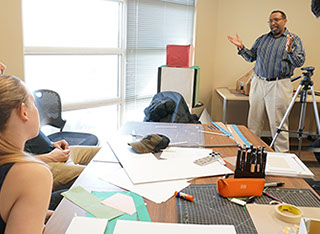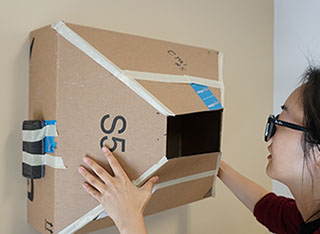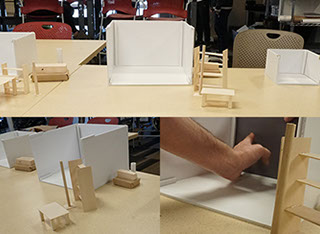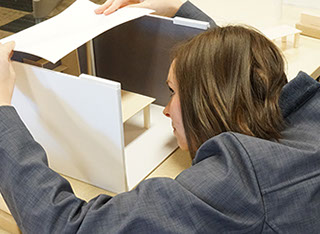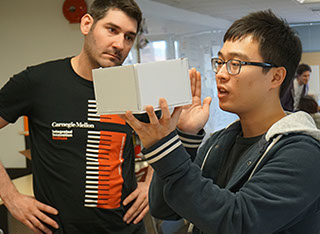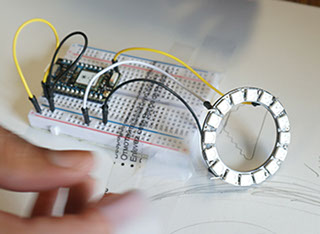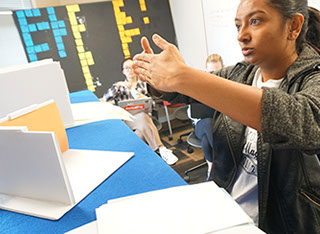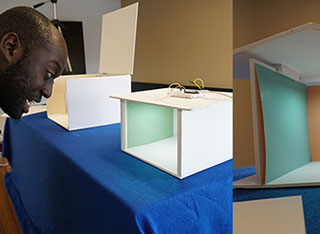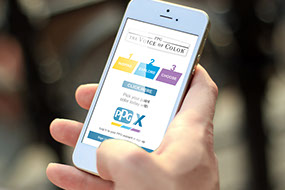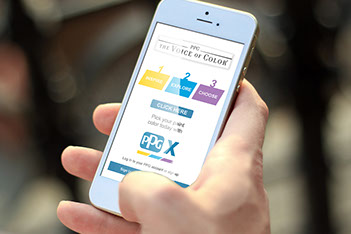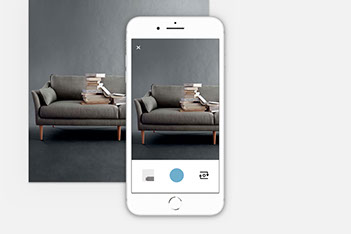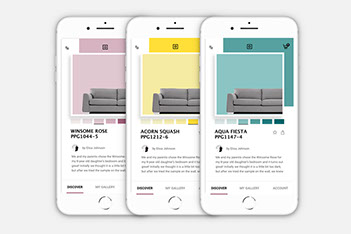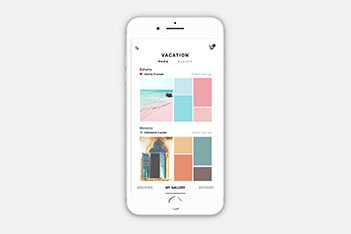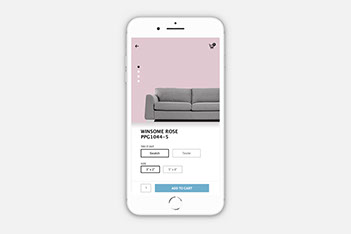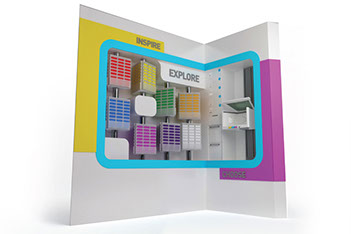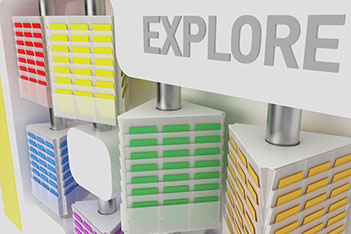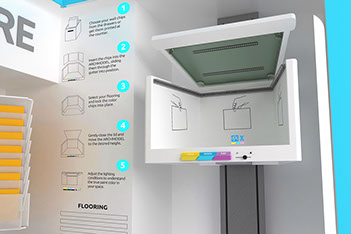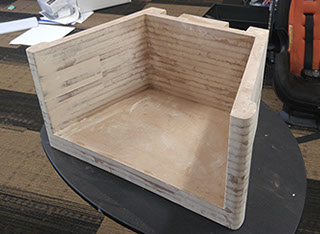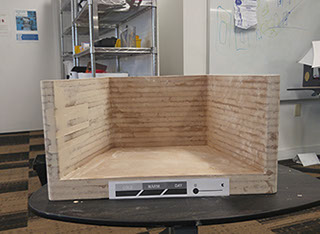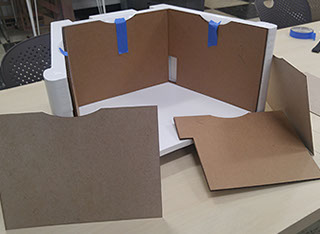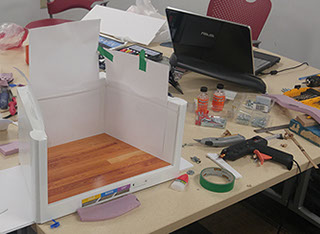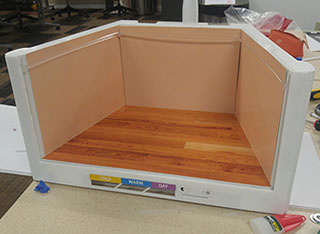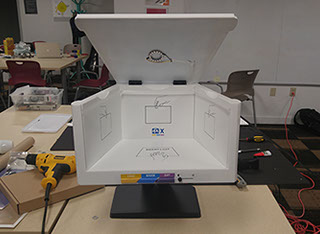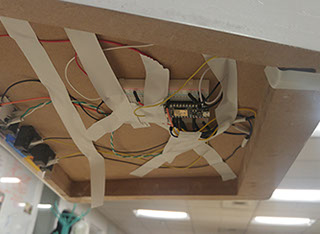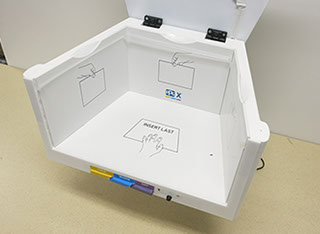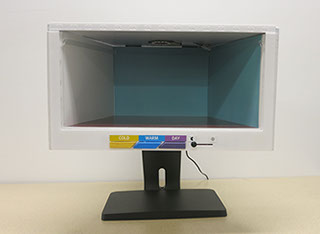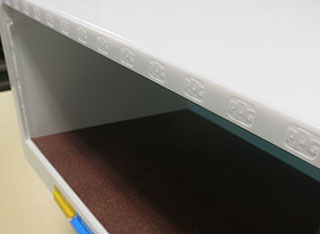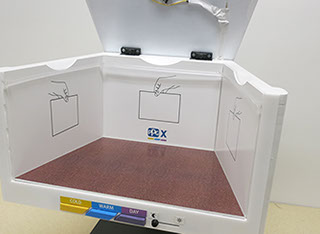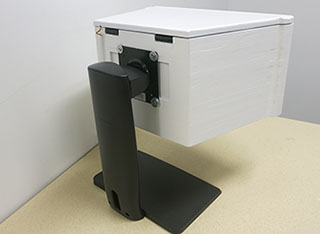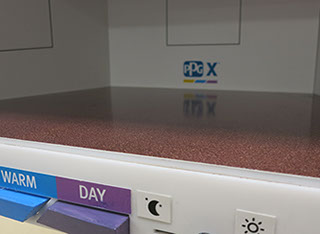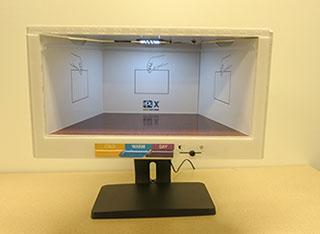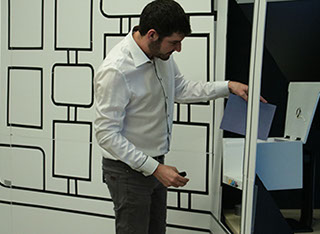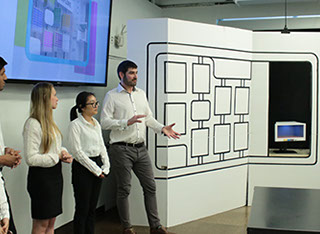PPG Paint
Carnegie Mellon University
Pittsburgh, USA
Integrated Product Development
Team Project (CAPSTONE)
Jan - May 2017 (12 weeks)
TEAM
Mark Byrne | Yefei He | Alok Joshi
Lauren Romero | Meilin Zhang
MY ROLE
User Research | Conceptualization
Usability Testing | Prototyping
CAD & Rendering | Presentation Slides | Report Formatting
PROJECT BRIEF
Develop the next generation of color selection tool to allow consumers to think about color, which should ultimately drive them to the purchase of a PPG product.
OUR PROCESS
PHASE 2
PHASE 4
PHASE 1
PHASE 3
IDENTIFY
Identifying opportunities and choosing an opportunity
UNDERSTAND
Gathering data to gain an in-depth understanding, determine the criteria
CONCEPTUALIZE
Translation a of the criteria
to develop a product/service concept
REALIZE
Produce and communicate the opportunity through a proven concept
OUR OUTCOME


PPG-X is a three-step process encapsulating:
INSPIRE - EXPLORE - CHOOSE.
The final concept includes a three step process for choosing paint color that will be incorporated in a new design of the PPG in-store display and integrates with an updated PPG 'Voice of Color' app and website.
Our high-level goals were to:
- Make people feel more comfortable when choosing the product
- Give customers more confidence in their color selection
- Create a service for innovation and deeper customer engagement

HOW WE GOT THERE
PHASE 1
PHASE 1
IDENTIFY
Identifying opportunities and choosing an opportunity
Initial Research
Stakeholders
SET Factors
POG
In order to identify the problem space, initial research was conducted through a brain storming exercise and brief literature review resulting in a mind map and stakeholder map. Next the team set out to determine the SET Factors (Social, Economic, and Technology), which focus on cultural and social interaction, by categorizing research findings into these three categories. Using these three tools allowed the team to find trends and areas of opportunity which accumulated in a collection of 131 Product Opportunity Gaps (POGs). The list was synthesized and reduced into twelve affinity groups, with new opportunities outlining these collections. They were plugged into a weighted matrix and evaluated against a set of criteria which determined the most viable top three opportunities.
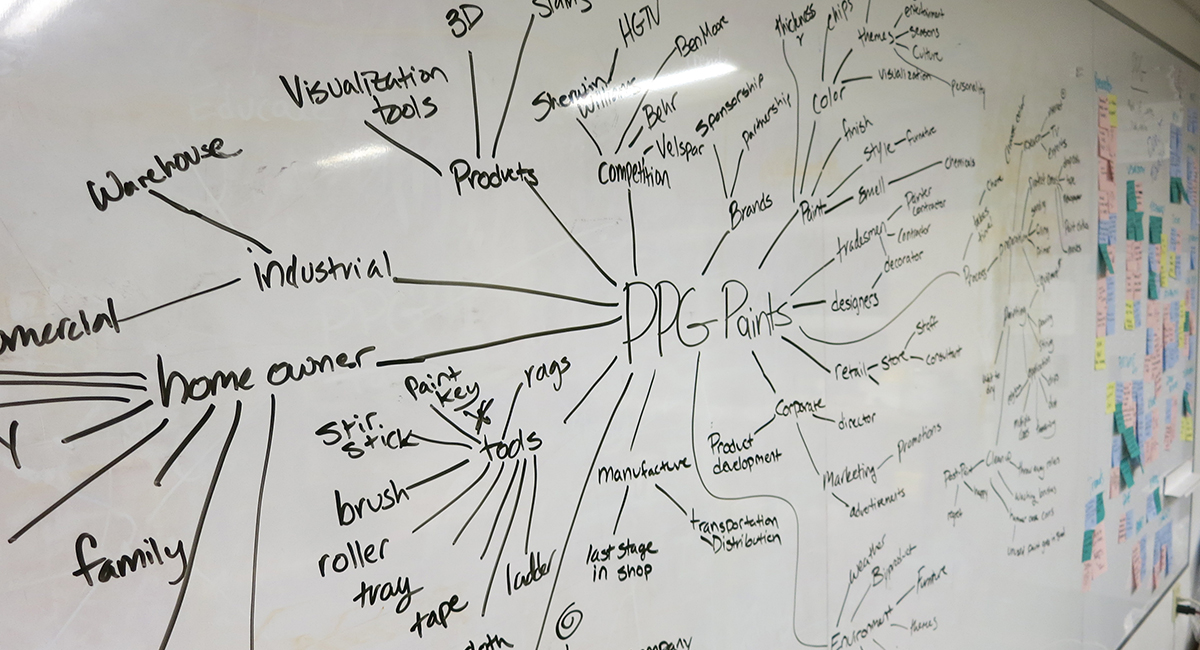
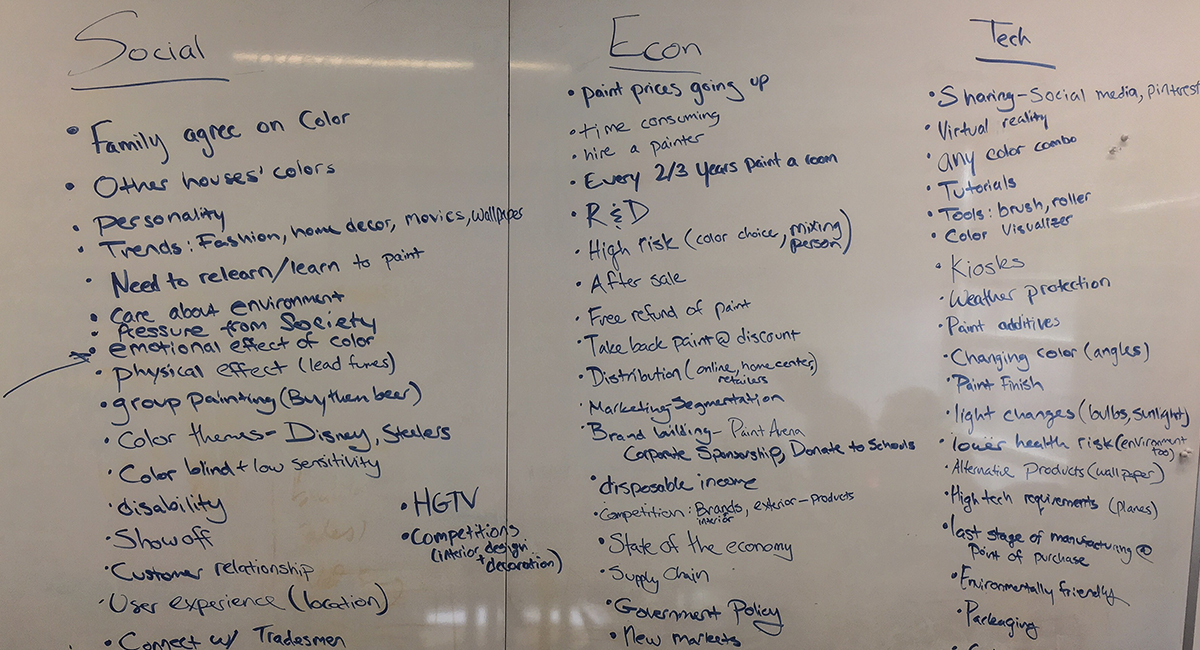
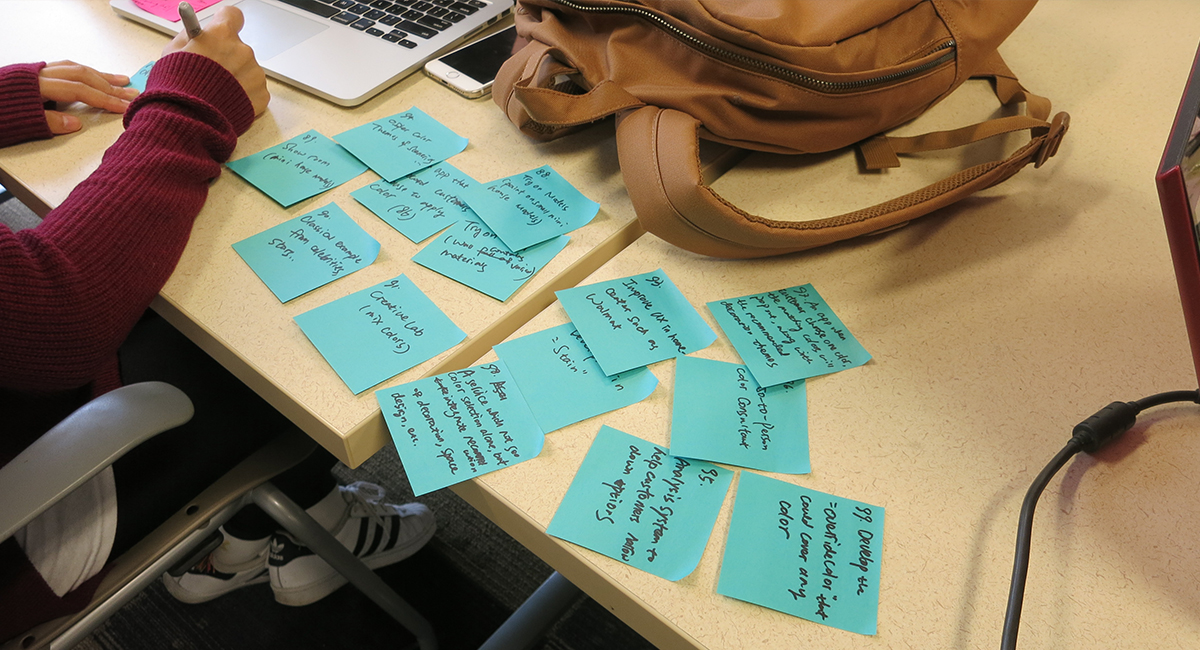
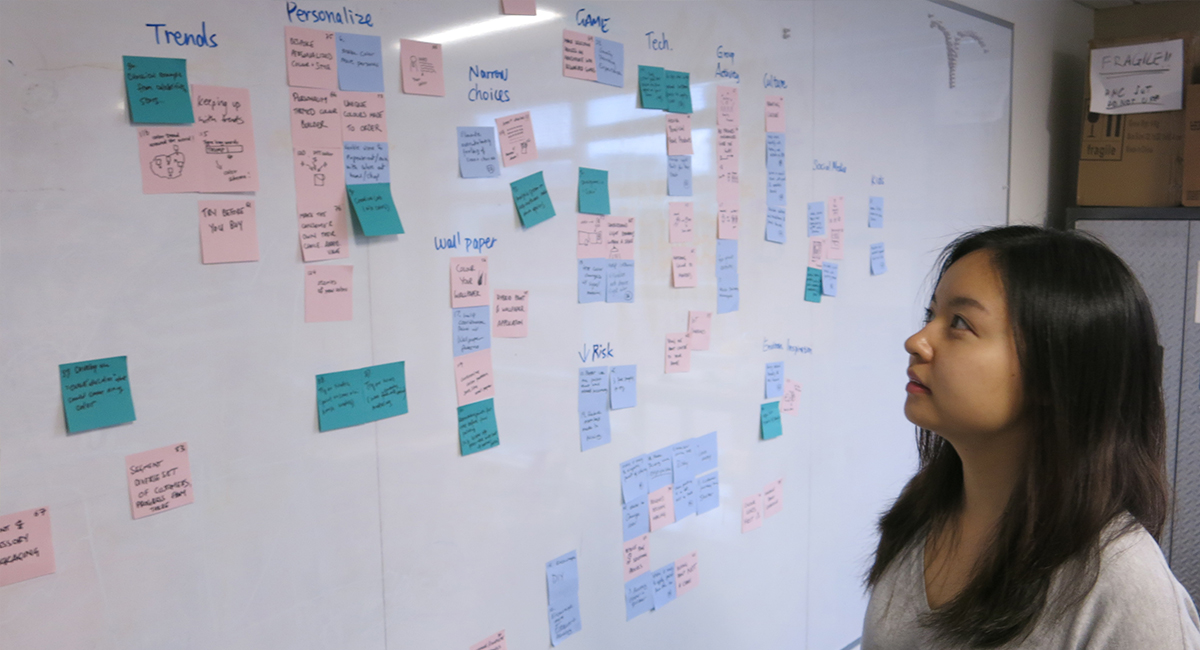
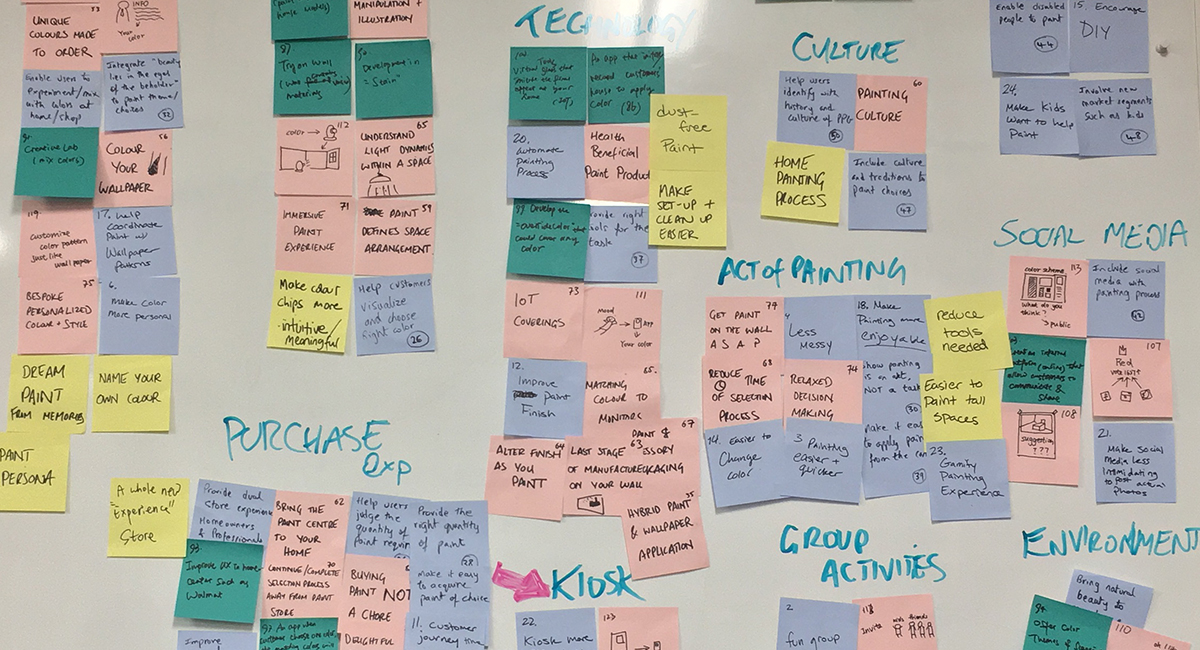
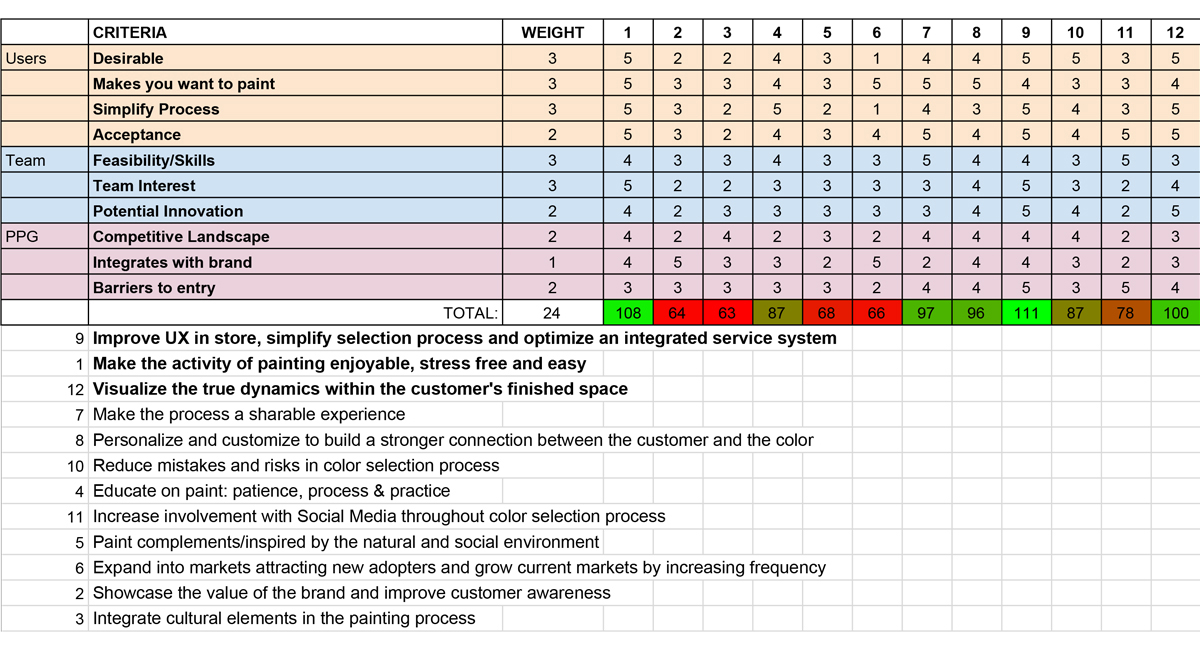
Mind-Map our new topic
SET factors allow broader understanding of cultural and social interaction
Jotting down all those ideas
A group Post-It war, done in silence, with an elected moderator who has final say
Affinity Mapping opportunities into synthesized groupings
Weighted Matrix outlines top three opportunities
<
>
FINAL PRODUCT OPPORTUNITY GAP
Create an interactive in store experience by engaging dynamic paint visualization processes thus simplifying the selection process for homeowners and professionals.
PHASE 2
PHASE 2
UNDERSTAND
Gathering data to gain an in-depth understanding, determine the criteria
Market Analysis
Primary Research
User Journey Map
Value Opportunity
Insights
Design Criteria
MAIN STAKEHOLDER
After some market research, we realized that the largest market potential would be to focus on those users who have some experience and proud of their home, willing to invest time and money in it. They are capable of “Do-It-Yourself” projects and spend time and effort to choose right color. We named this group the 'Experienced Creatives'.
- Largest share of DIY population
- Highest share of total paint volume and value
- Most untapped potential for PPG
- Early adopters – willingness to invest time & money

USER RESEARCH
To better understand our target customer, we conducted surveys, in-depth interviews, contextual inquiries, and observations. We talked to a range of consumers and professionals to understand both sides of the scale. We discovered methods that professionals use to choose color were not used to the same capacity by consumers. A mixture of untrained store staff and chaotic atmosphere means it is hard to replicate the conditions of a home setting and so this results in consumers making several trips to the store before making a final decision.

Pain Points
- There are too many tools available (color books, chips, kiosk) but people don’t have instruction o how to use them properly.
- Different environmental factors (day-light/night-time) affect the visual effect of the color in its surroundings.
- Customer find it hard to select a color that matches what they want, results in multiple wasted journeys to the store
- Too many color choices are overwhelming, but people still prefer a brand with many choices
USER PERSONA


AMY's JOURNEY MAP
VALUE OPPORTUNITY ANALYSIS
PROPOSED CONCEPT

By identifying the value opportunities in this problem space, we can differentiate our product from anything else on the market. Breakthrough products are driven by a complex combination of value attributes that connect with people’s lifestyles, so our aim is to design a product/service that answers these attributes and in doing so make our product/service into the perfect amalgamation of technology and style. Having defined our target user as the experienced creative, we defined our Value Opportunity Analysis (VOA) in the context of our problem statement and the proposed product opportunity.
Each class on the outside of the ring adds value to a product and improves the overall experience, making it useful, usable, and desirable. These are then ranked on a 5-step scale from low to high. By determining a value for each we can see the classes which are important and determine if they are underdeveloped, thus focusing our efforts on improving these situations. Ergonomics, Core Technology, and Quality assess the satisfaction during use. Social, environmental, identity, and aesthetics address lifestyle aspects of the consumer and emotion directly connects with the consumer’s fantasy in using the product. We must target one attribute in each category to position ourselves successfully.
INSIGHTS

PHASE 3
CONCEPTUALIZE
Translation of the criteria
to develop a concept
Ideation Process
Prototyping
User Testing
Final Concept
IDEATION PROCESS
We all put on our thinking caps and generated a wide range of concepts that answered out list of design criteria.
Concepts for product and service solutions were brainstormed as a team using the 6-3-5 Method and a series of Round Robin ideation techniques. Brainstorming was conducted independently and in pairs - as merit was seen in both methods. These concepts were presented, explored, and expanded upon to best understand their potential validity and relation to user insights and our set of Design Criteria. Once they were properly explored, we found there were some resonating themes and could categorize them into groups. Once we filtered through the ideas, we used a Pugh Chart to select our 3 top ideas and created prototypes for user testing. The best concept was selected, and given the nickname 'The Doll’s House’.

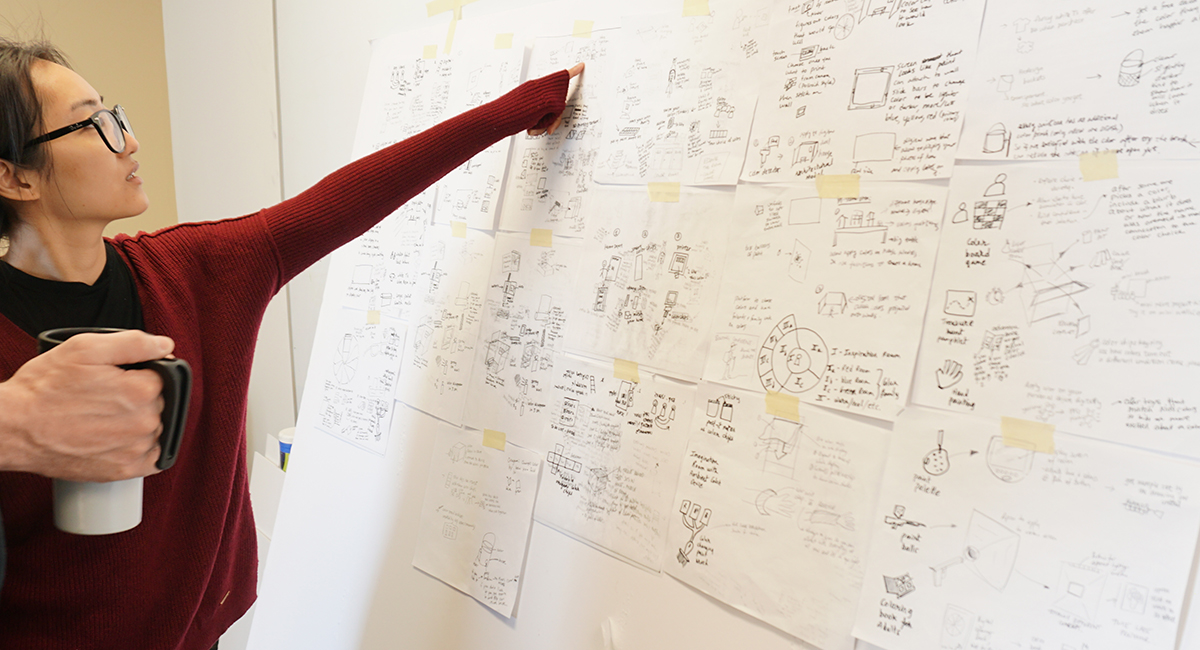
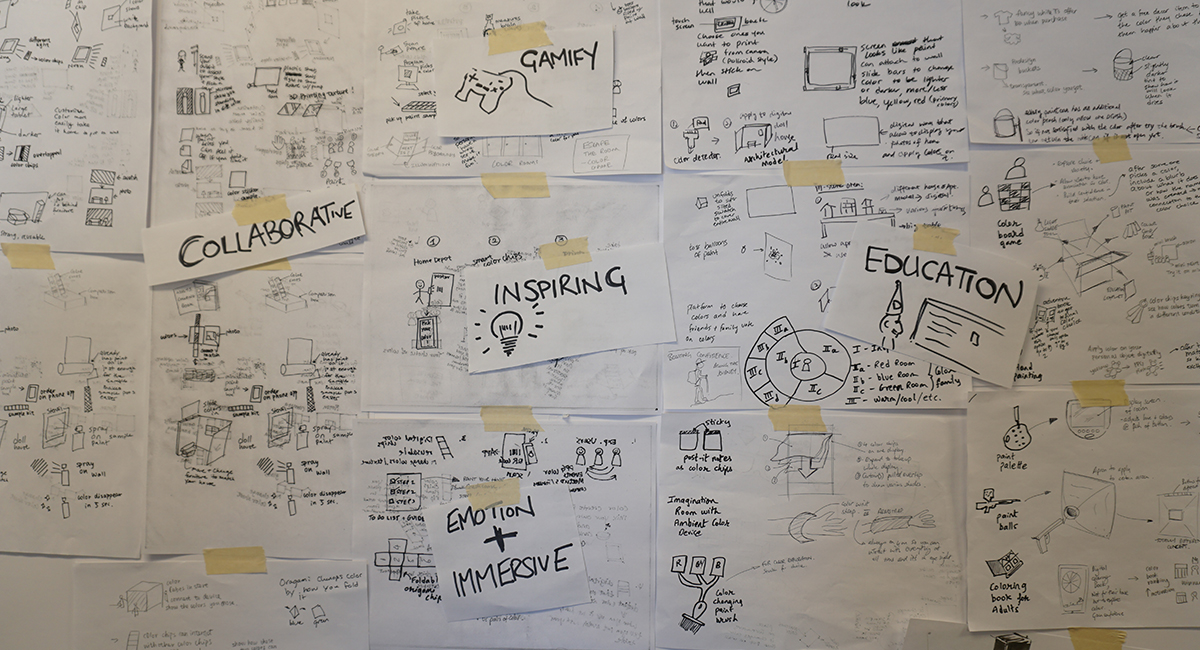
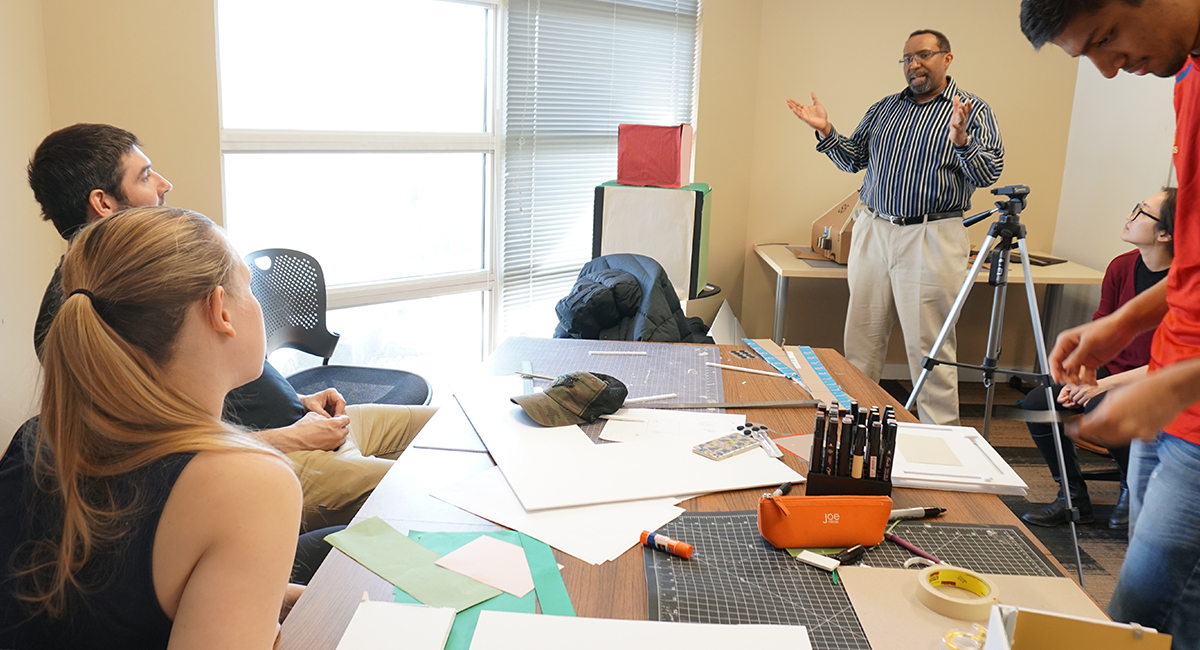
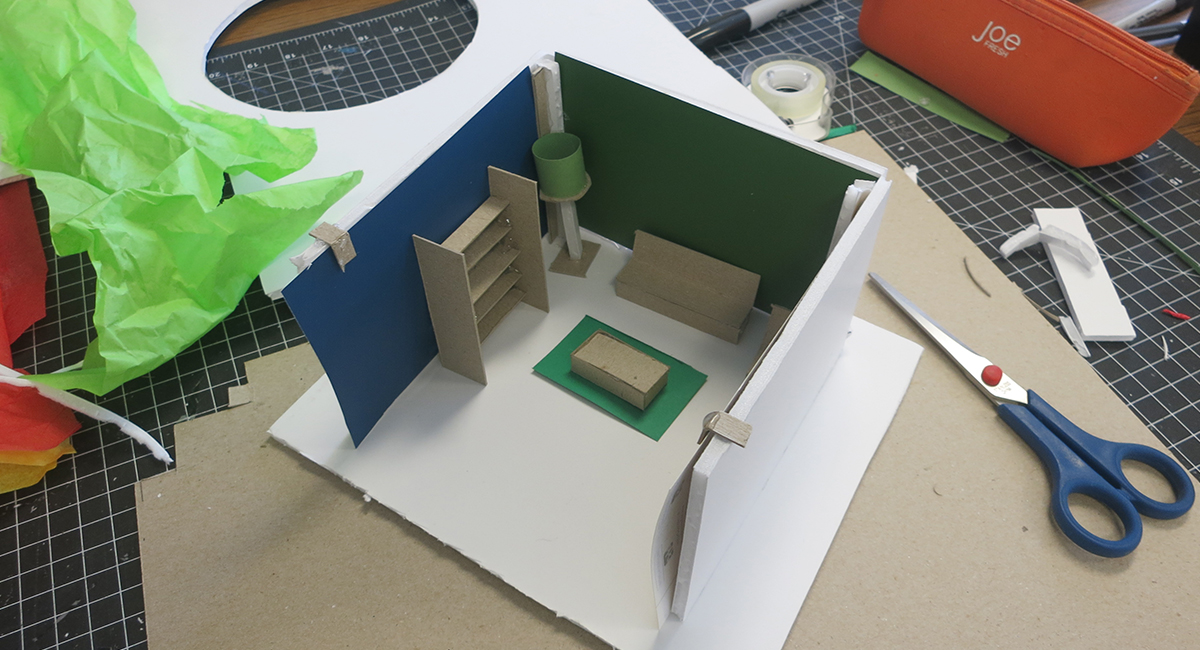
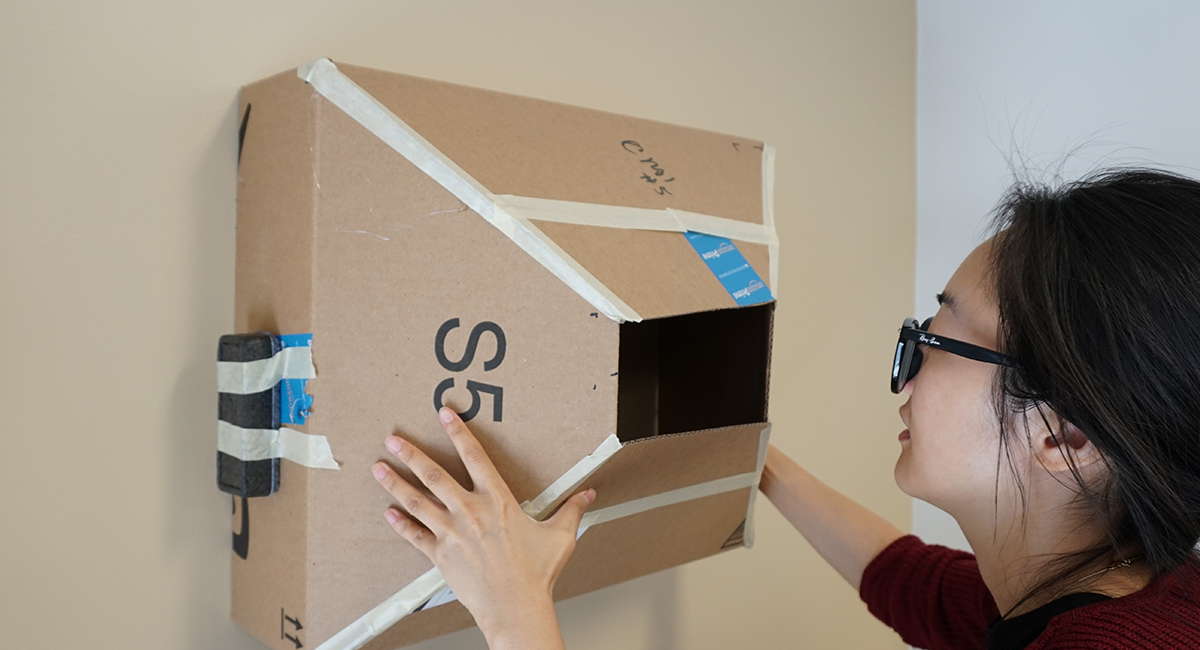
Journey through our ideation process
Using the 6-3-5 quickfire round to generate as many concepts as we could
Finding cohesion among concepts to provide further inspiration
Let's start prototyping!
'Doll's House' Prototype
'Secluded view light-box' Prototype
3 ROUNDS OF USER TESTING
Throughout the user testing, we made 19 different shapes and sizes of our doll's house and included furniture, both abstract and contemporary. At this stage we took a step back and referred back to our notes from our user research studies and insights. We remembered that one of the main customer pain points was understanding how the paint would work under different environmental and lighting conditions, so we decided to forget the furniture and turn our Doll's House into a Light Box and include various settings that could imitate various times of the day.
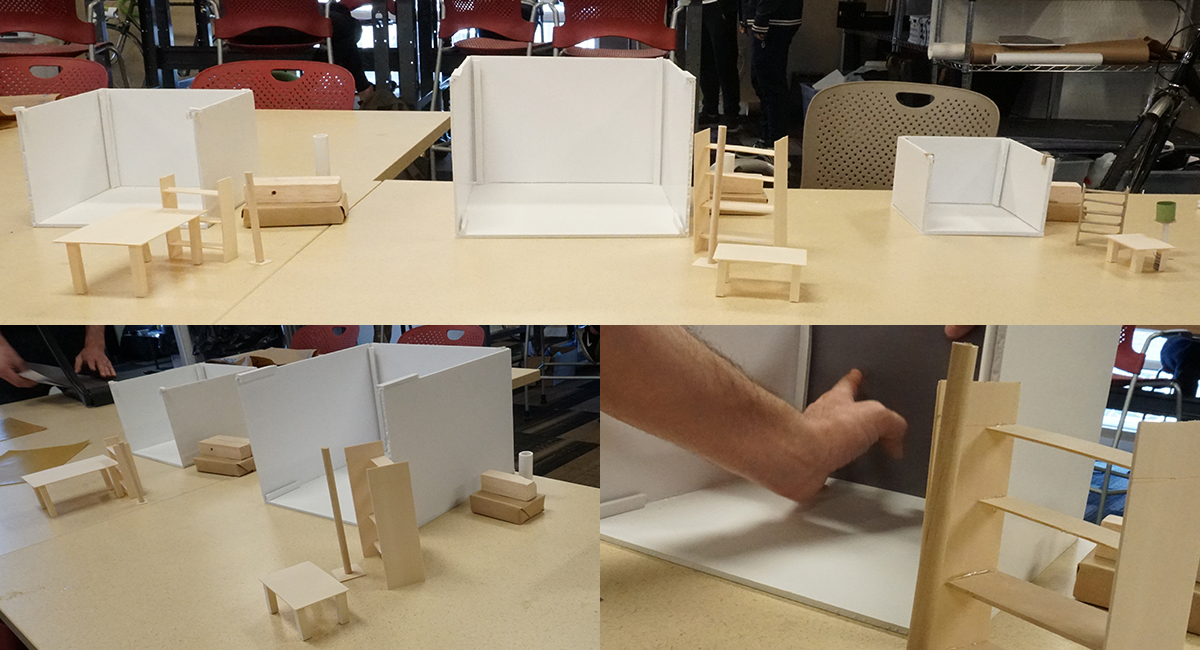
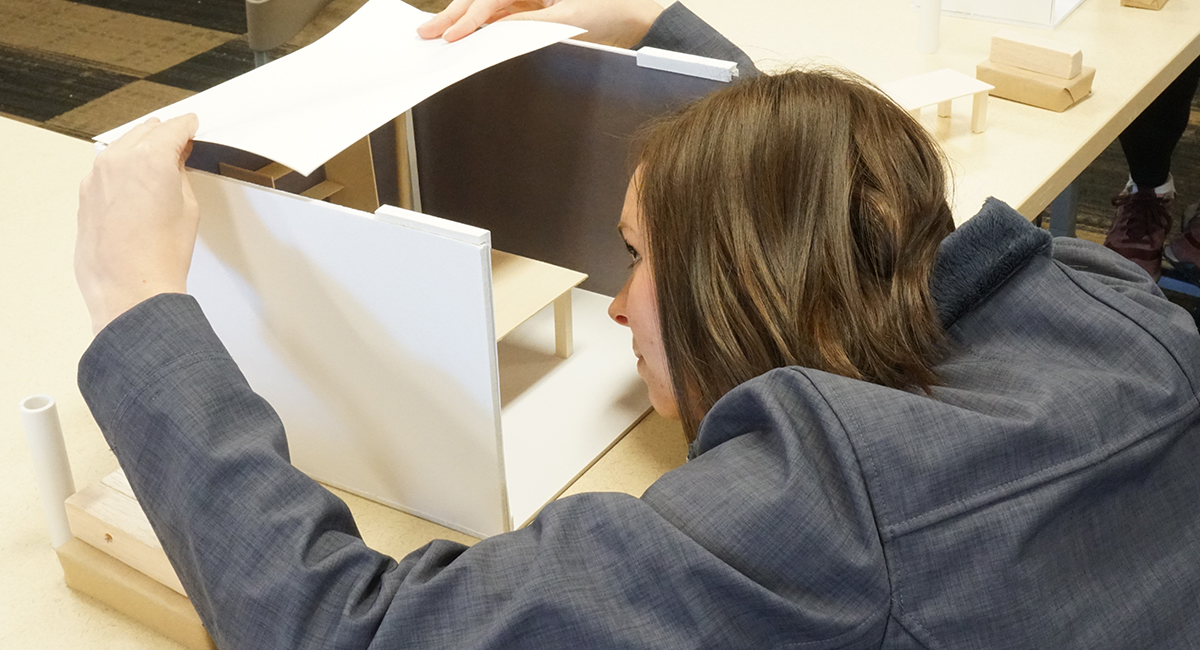
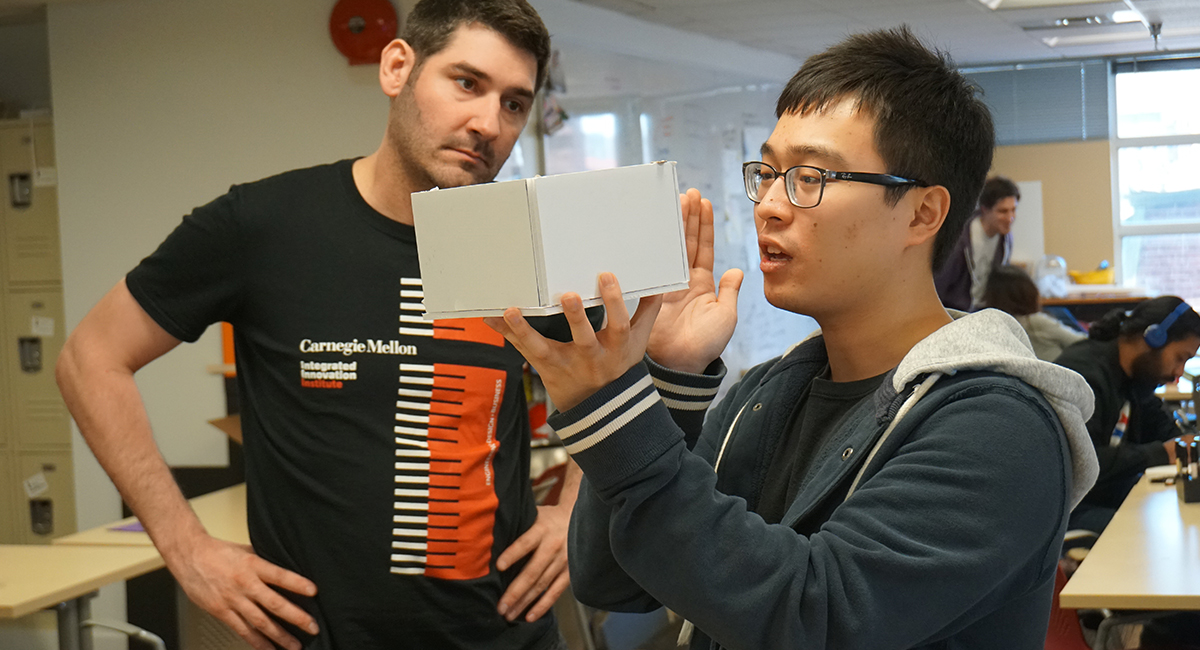
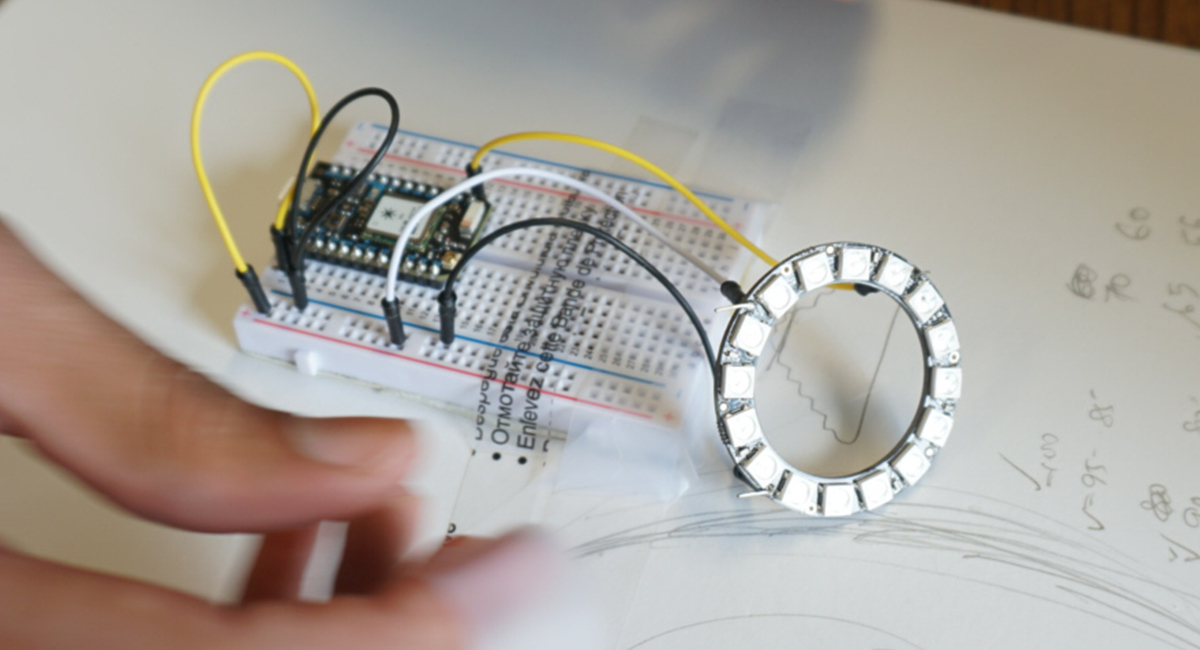
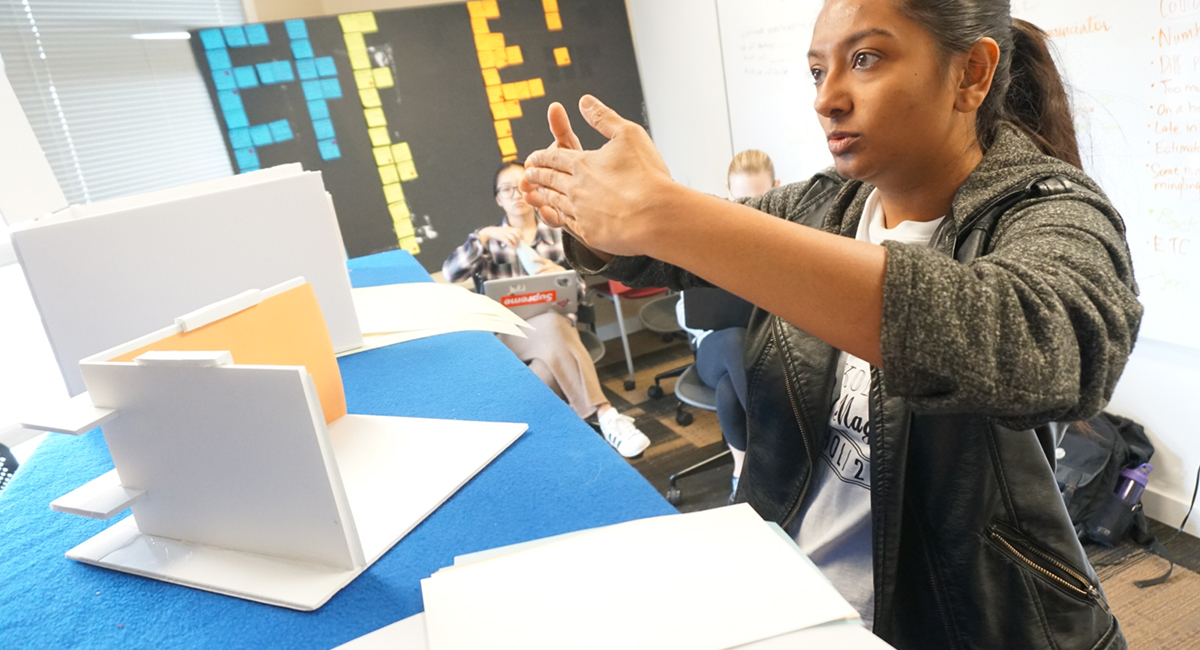
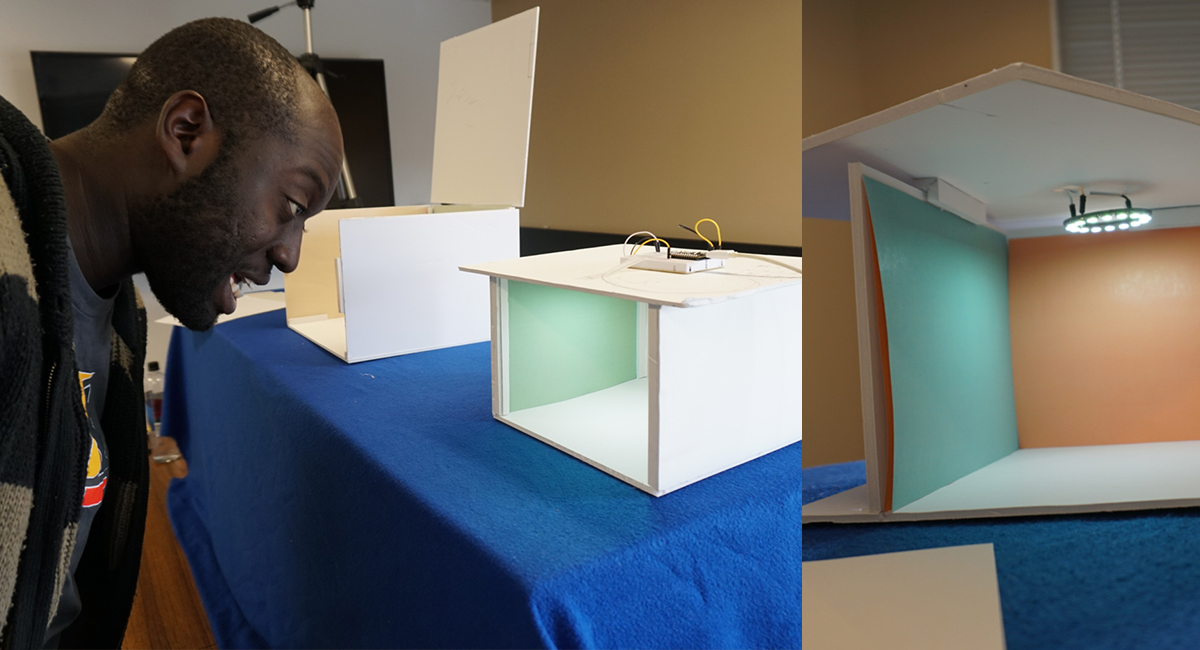
PPG LIM (Light Imitation Model)
Throughout the user testing, we made 19 different shapes and sizes of our doll's house and included furniture, both abstract and contemporary. At this stage we took a step back and referred back to our notes from our user research studies and insights. We remembered that one of the main customer pain points was understanding how the paint would work under different environmental and lighting conditions, so we decided to forget the furniture and turn our Doll's House into a Light Box and include various settings that could imitate various times of the day. Hence our final product concept would be called the PPG LIM (Light Imitation Model)
We decided not to disregard the existing color tools that people are familiar with, i.e. color books, color chips, brochures, etc. So, we took this new concept of the Light Imitation Model and integrated it into the existing structure of PPG tools and material already available. By innovating and upgrading this process, we would add a new section onto the already existing PPG color mobile app and create a trans-formative new user experience.
PHASE 4
REALIZE
Produce and communicate the opportunity through a proven concept
Final Concept
PPG-X Process
LiteBox Prototype
Presentation
FINAL CONCEPT
PPG-X (Experience) is a simple 3-step service that helps the customer progress with their color selection journey from initial inspiration to final choice through the stages of INSPIRE – EXPLORE – CHOOSE. PPG-X incorporates some of the most helpful tools, and adds a new color selection mobile app and an in store Lighting Imitation Model.
The entire process reduces trips to the store and increases consumer color confidence. Consumers are guided through the steps using a checklist that is provided on the PPG app as well as in store. The inspire stage helps to broaden consumers horizon about color choices. The explore stage helps consumers narrow down these choices, and the final choose stage guides consumers to a final color and an easy purchasing experience.
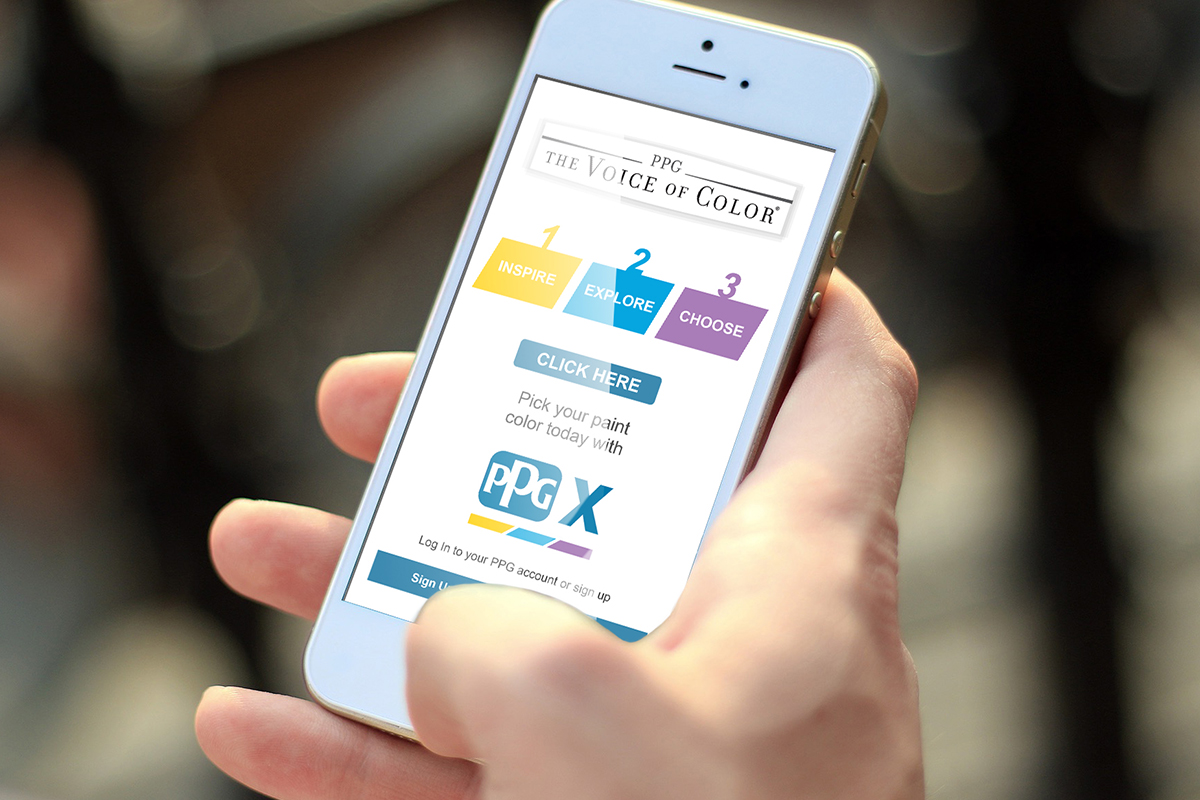
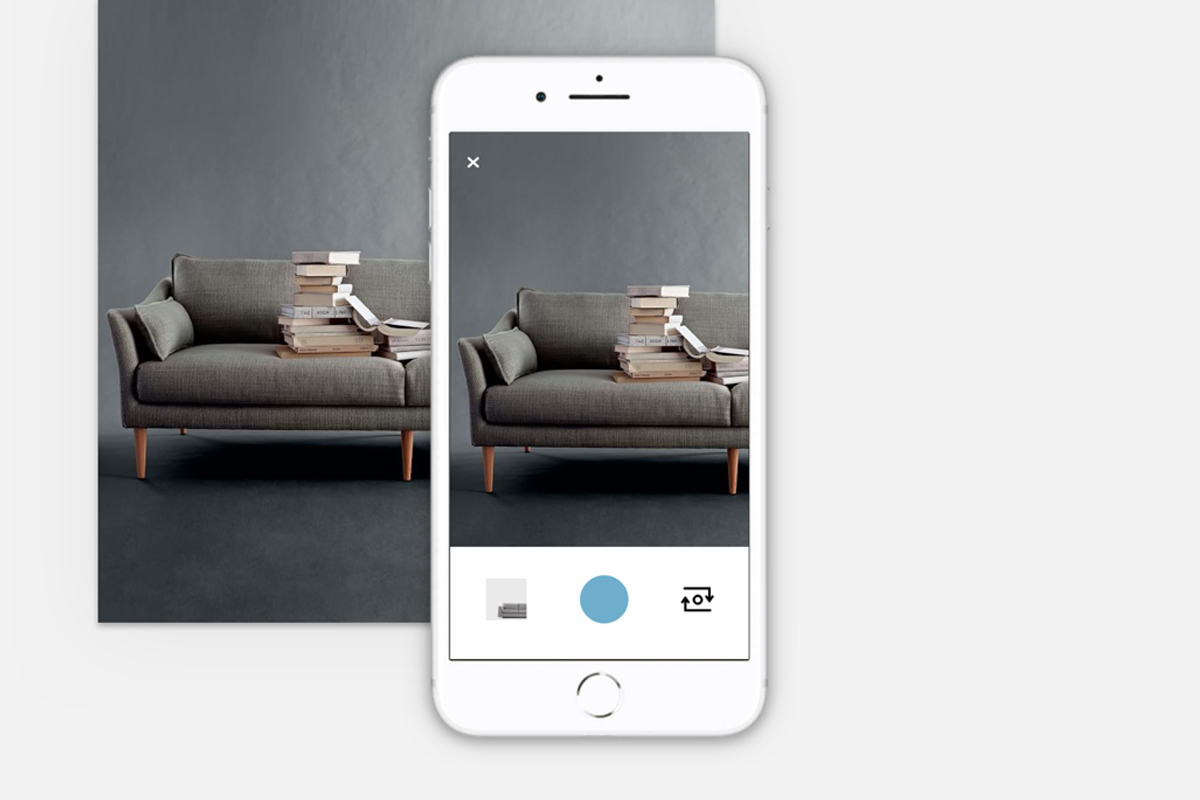
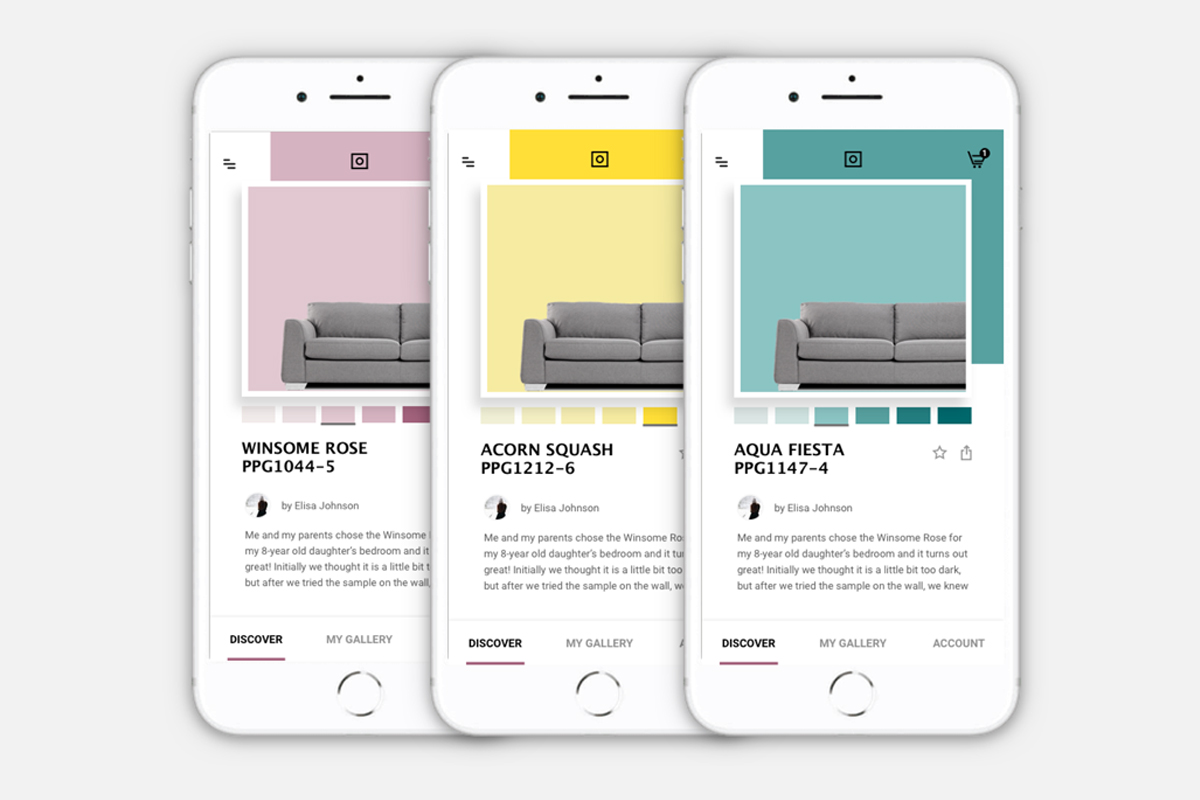
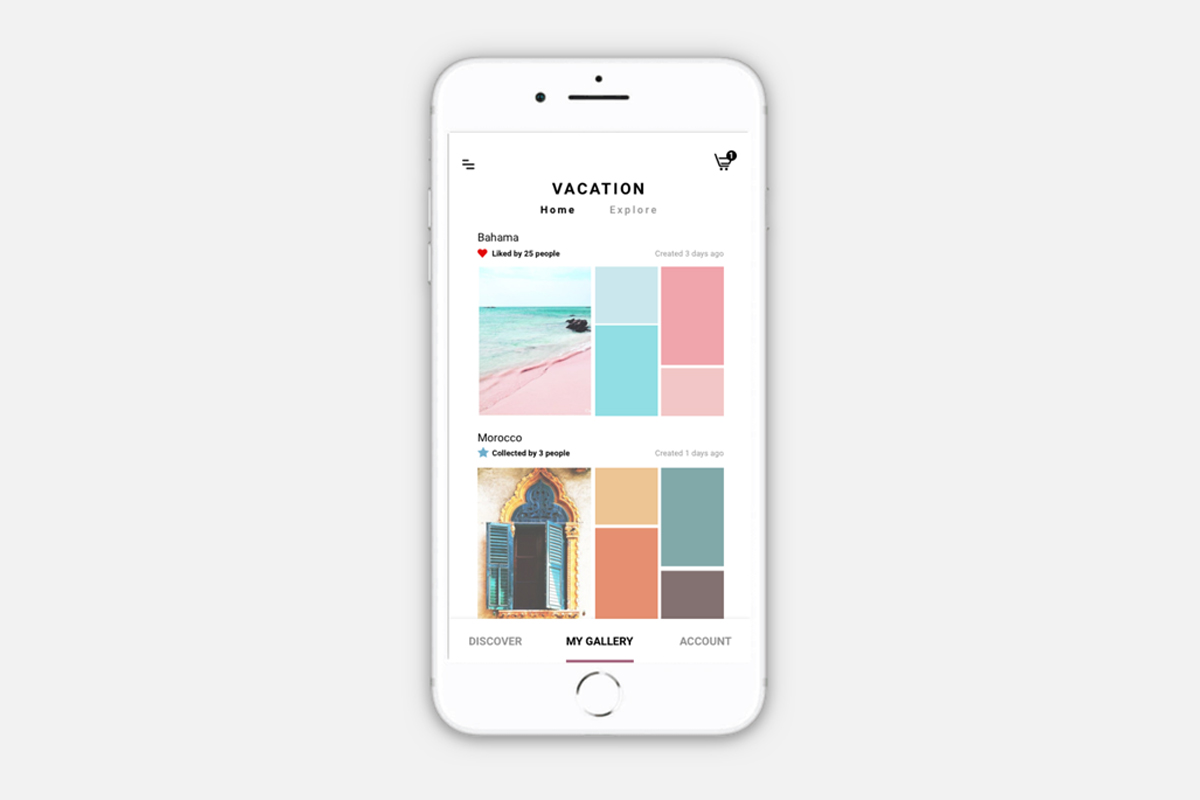
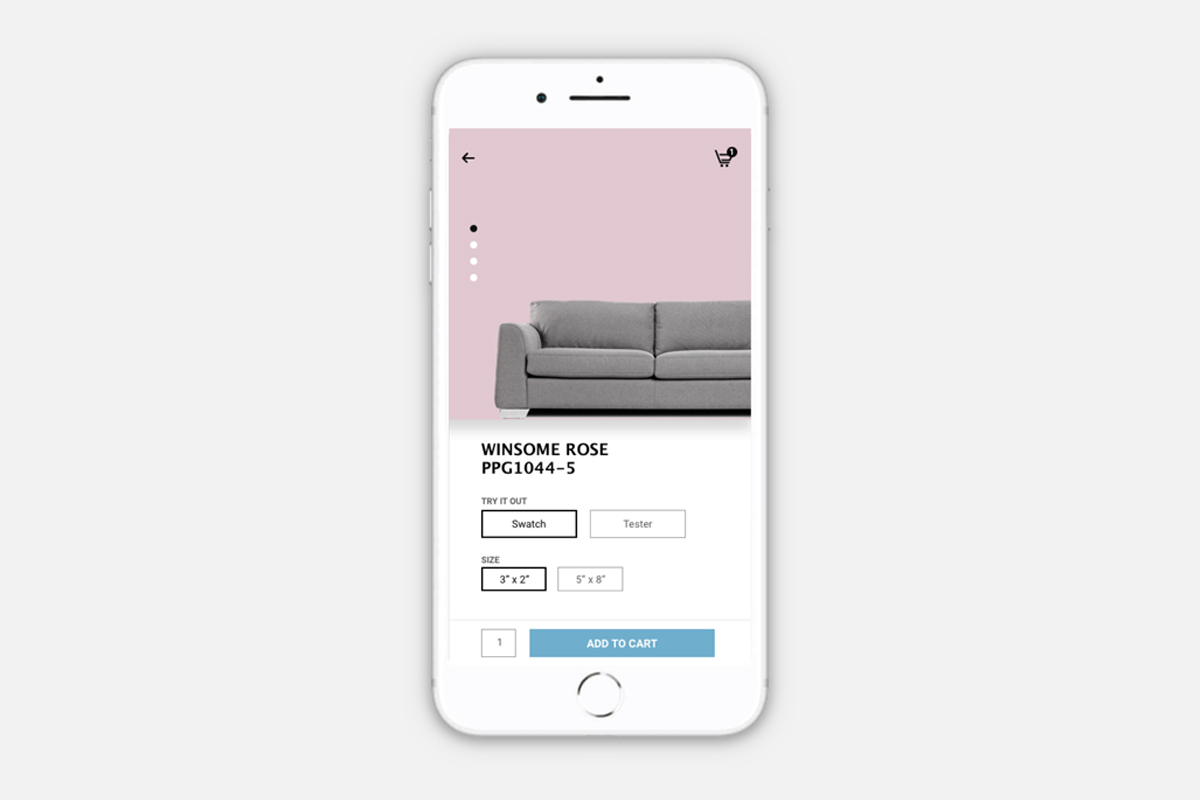
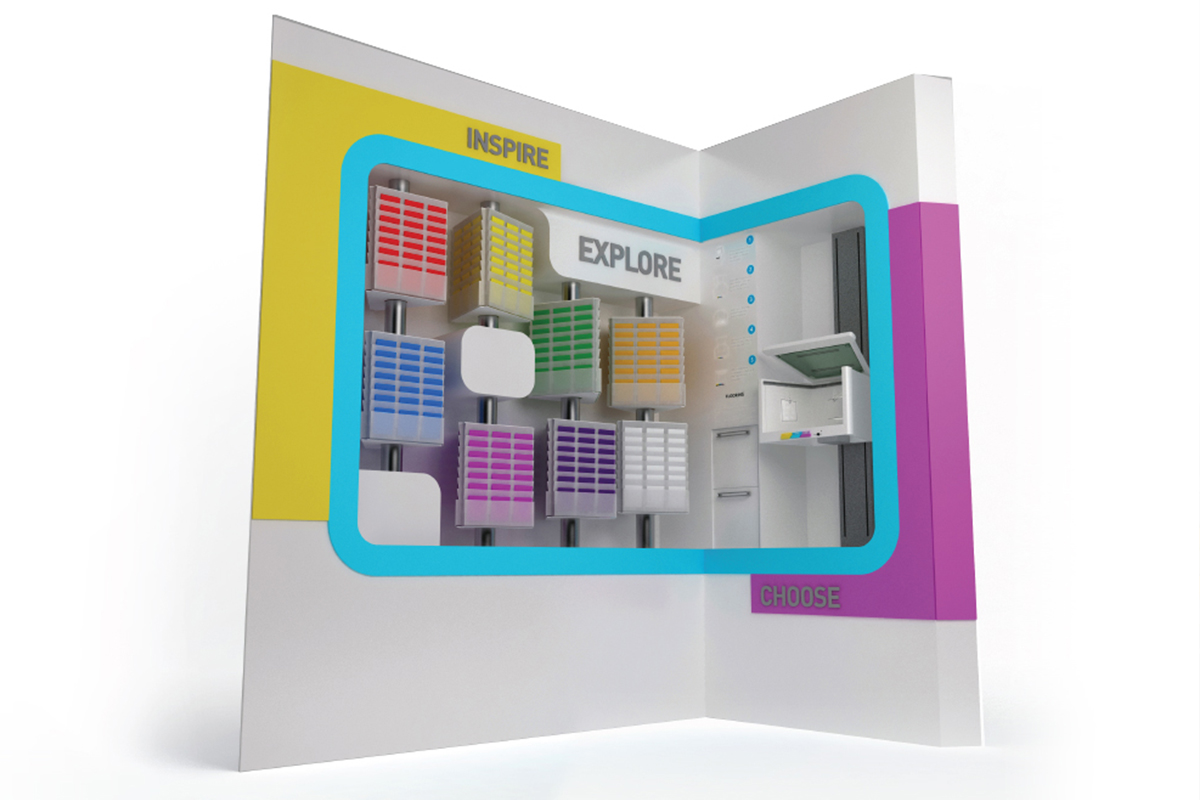
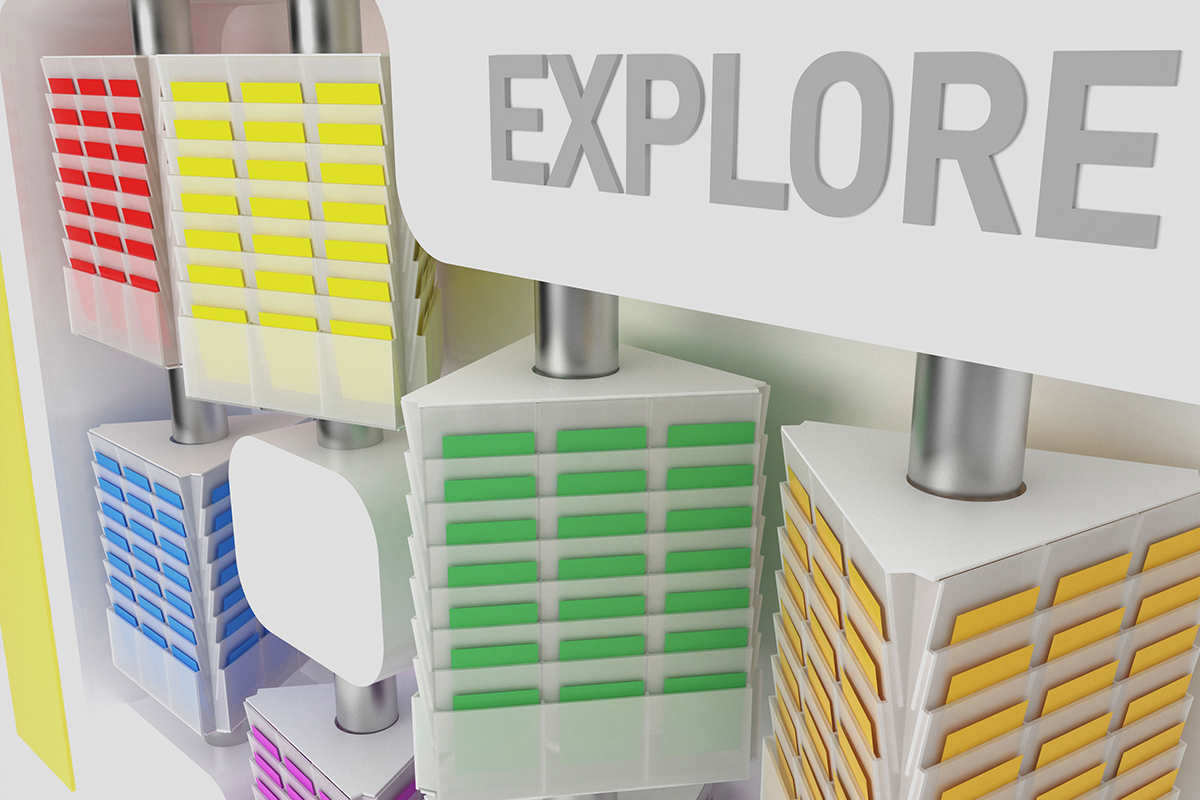
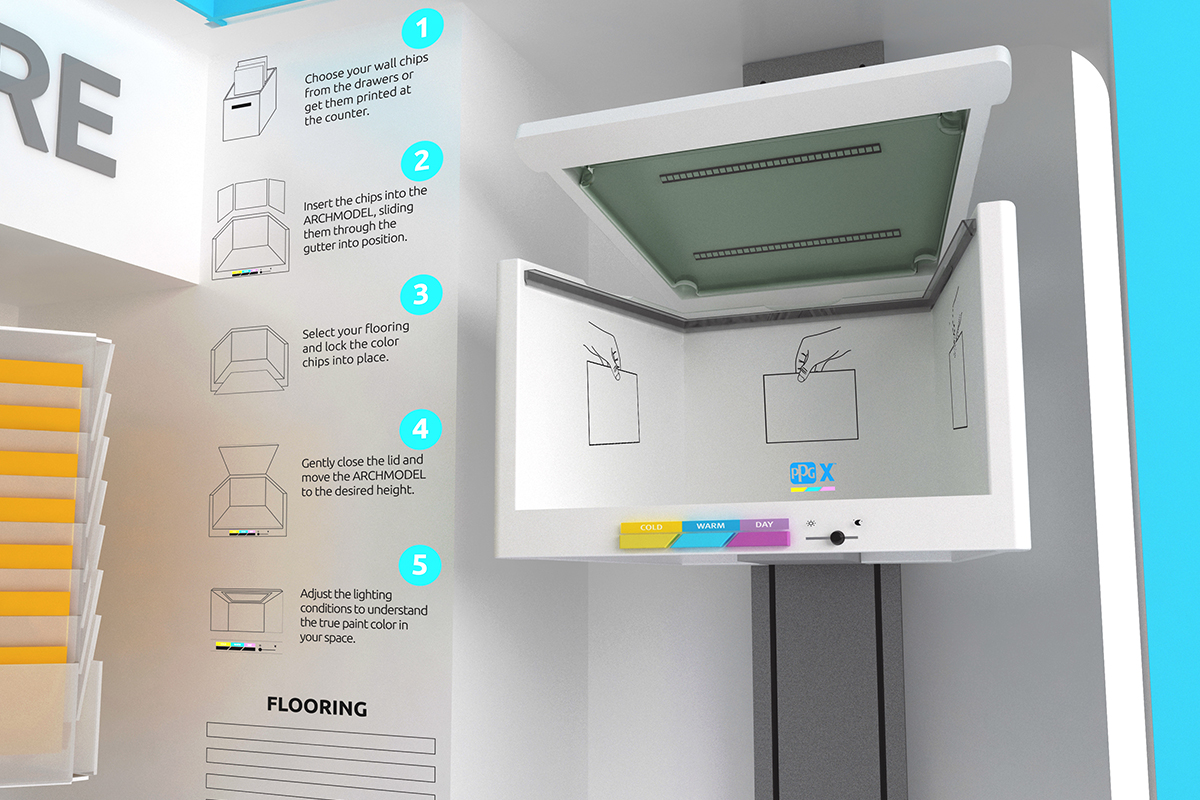
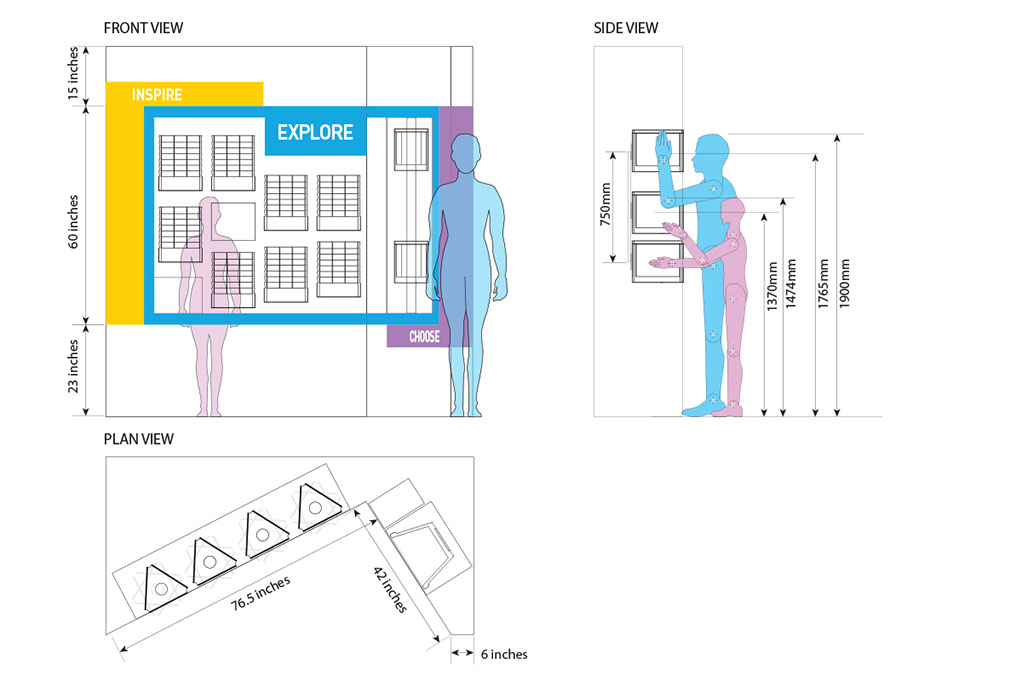
Take control with the PPG-X app and retail experience
Customers take a photo of their home furnishings and surrounding materials/objects
Based on recorded photos, PPG-X app creates tailored color palettes to suit the environment
Customer save their favorite combinations and create bespoke color books within the app that they can share and reference
Once they have decided on color choices they can order samples through the app or visit the store to continue the experience
Once they enter the store they are greeted with the new, state of the art, retail stand
A creative, space efficient, Innovative color chip carousel contains all colors in the collection, but reduces overwhelming factor
LIM Lightbox and instruction display allow customers to test color swatches in replicate conditions
Package drawing showing dimensions and either extreme of human user
PPG-X PROCESS

PPG-LIM Prototype
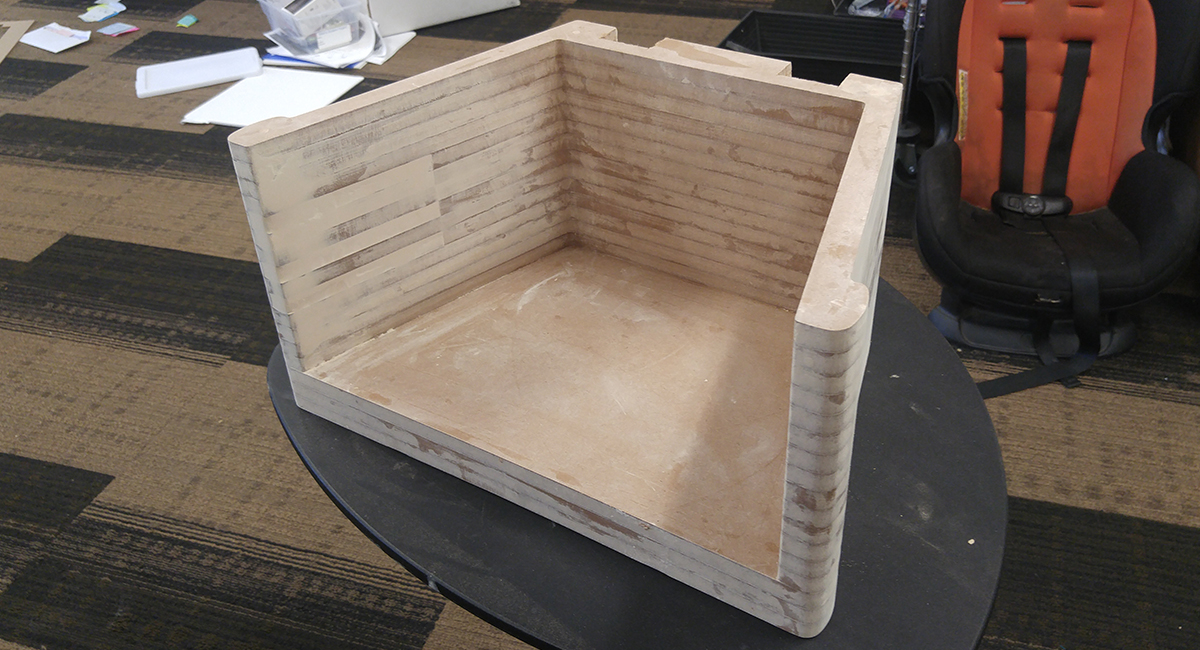
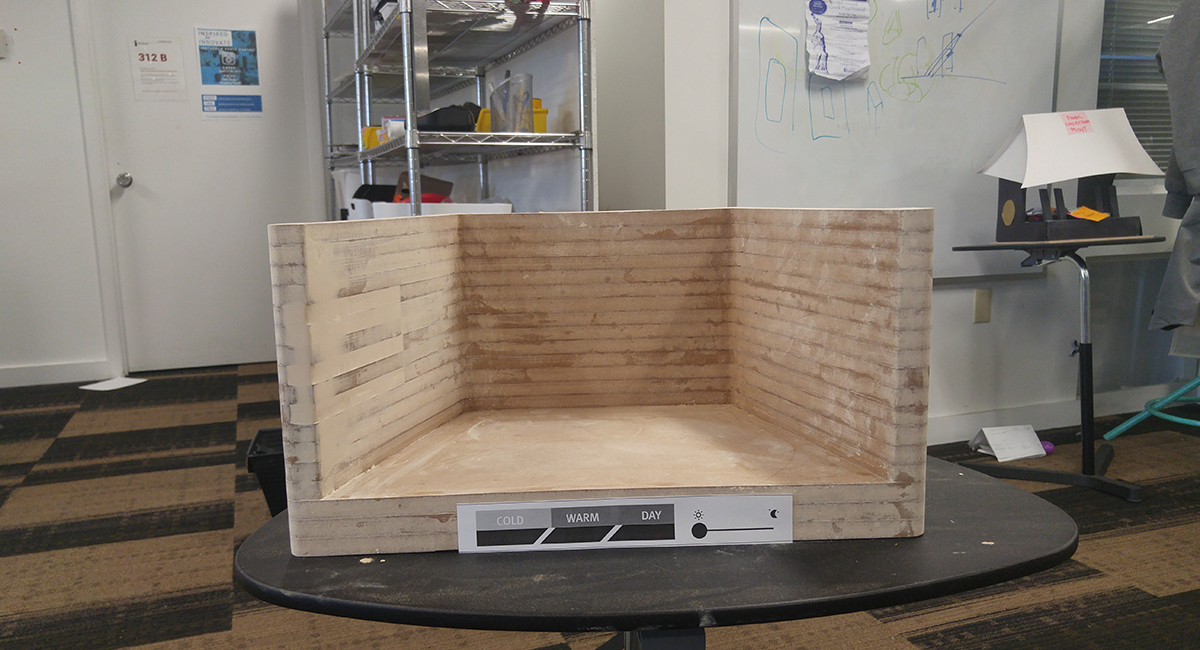
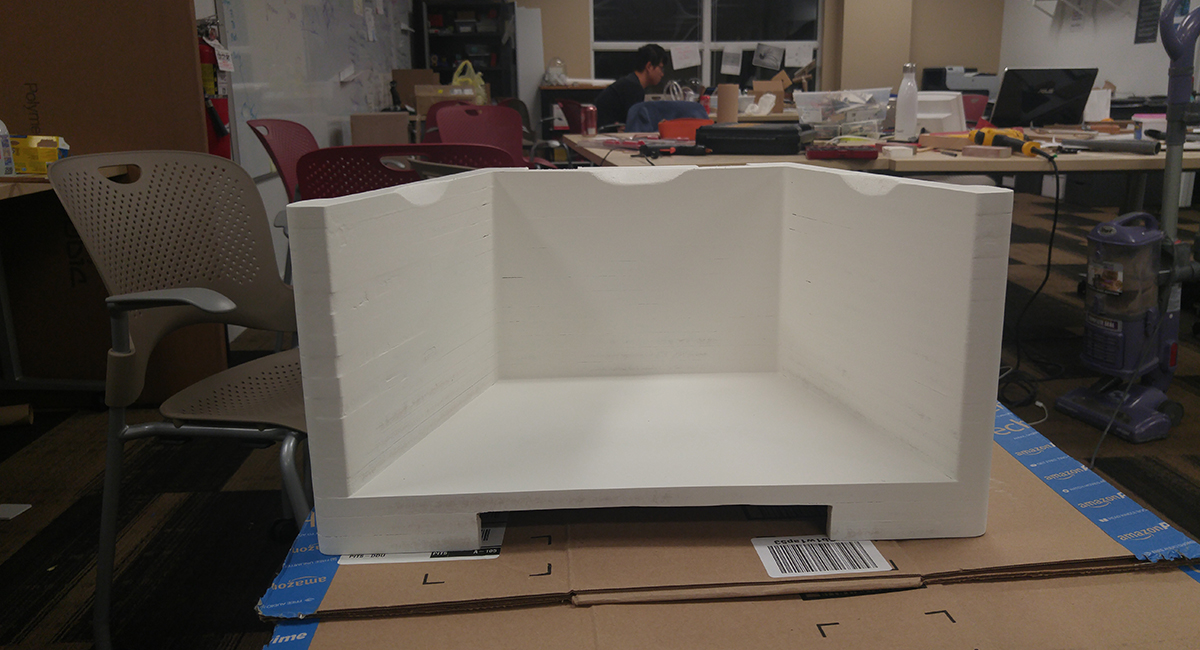
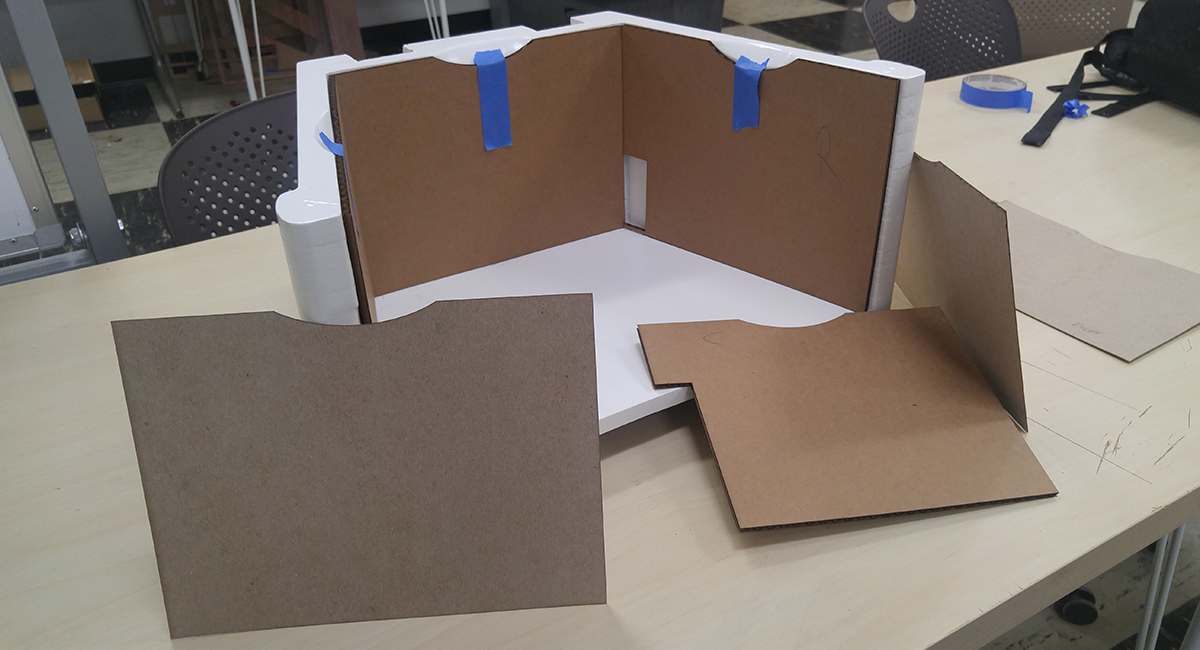
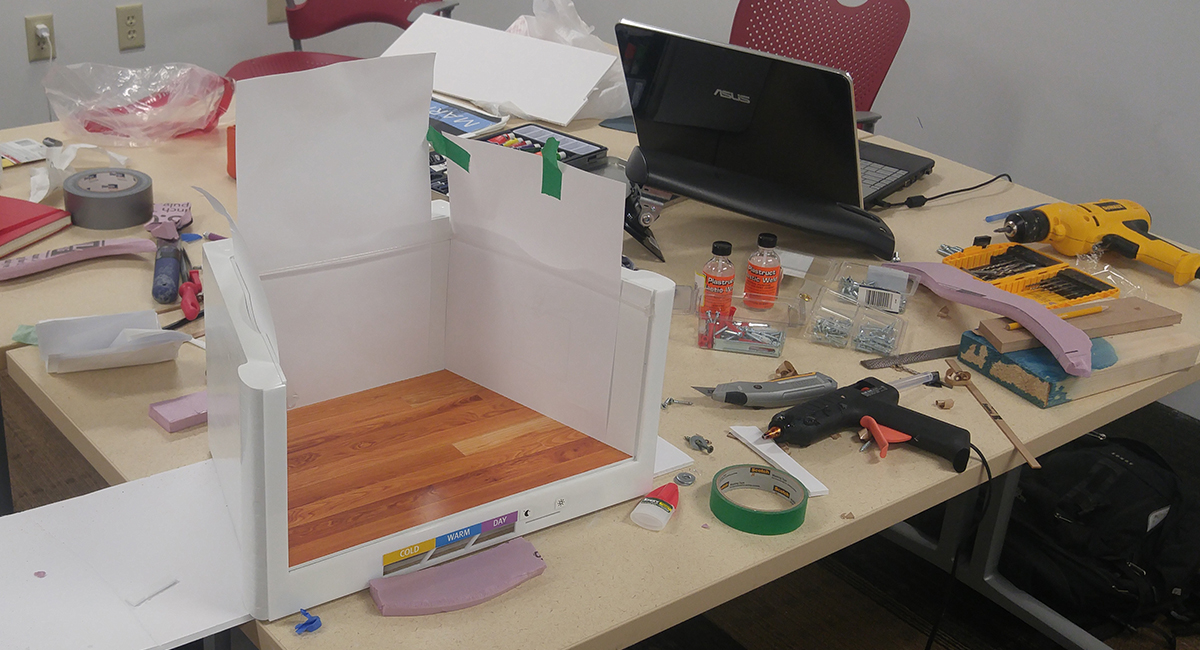
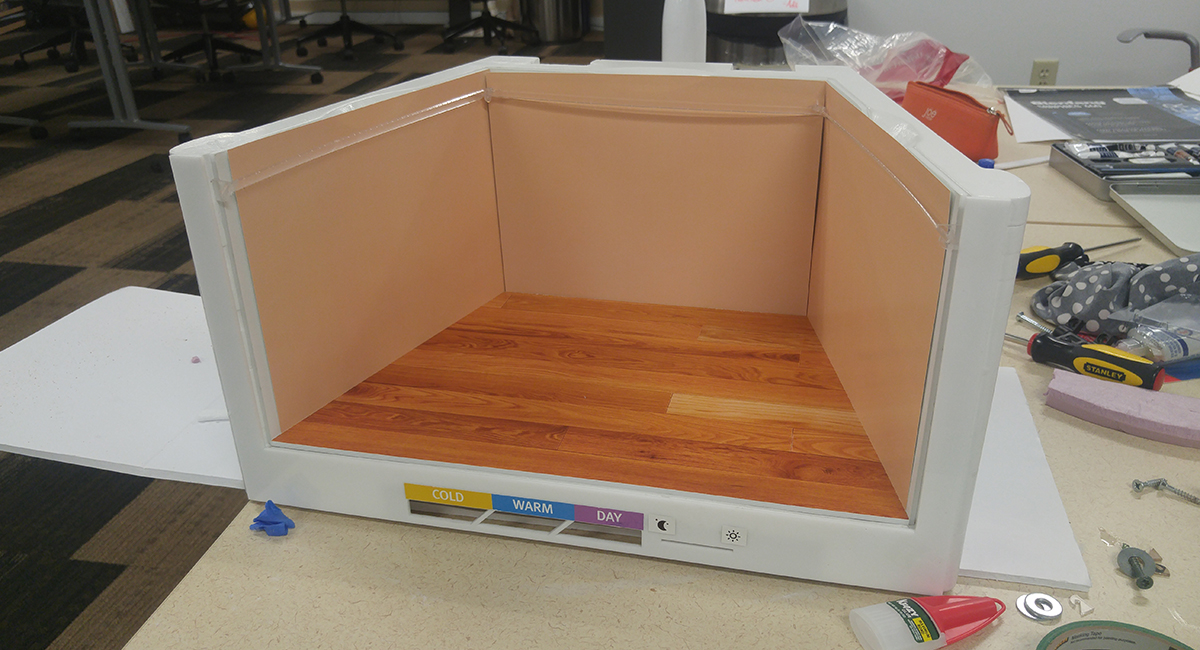
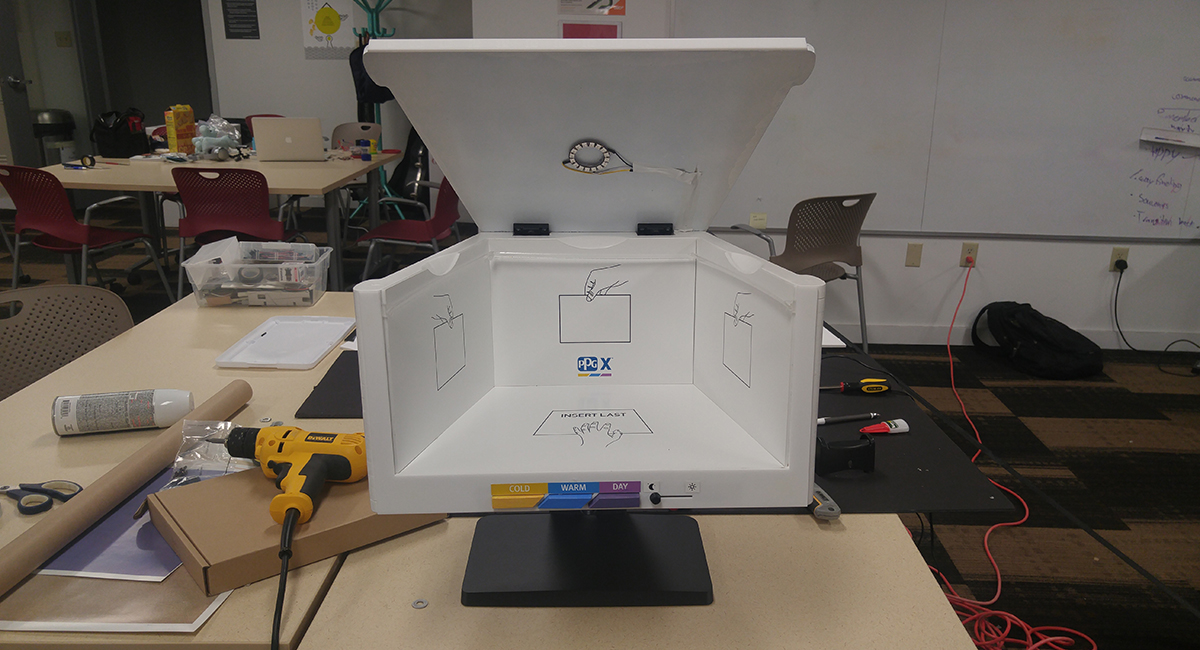
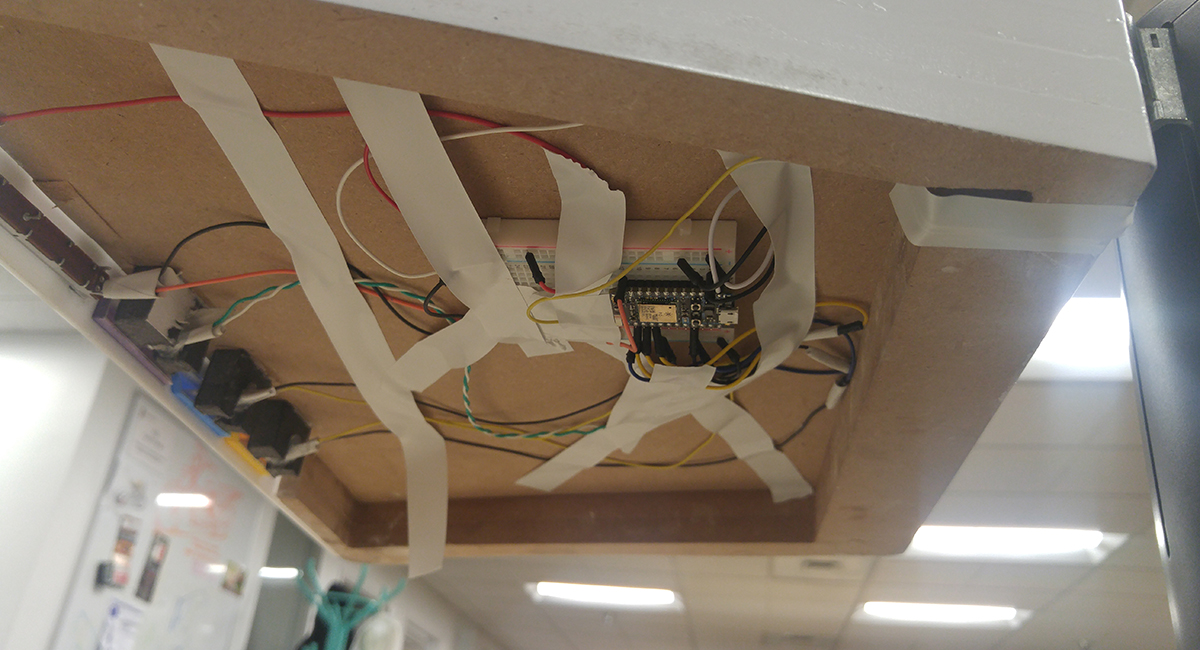
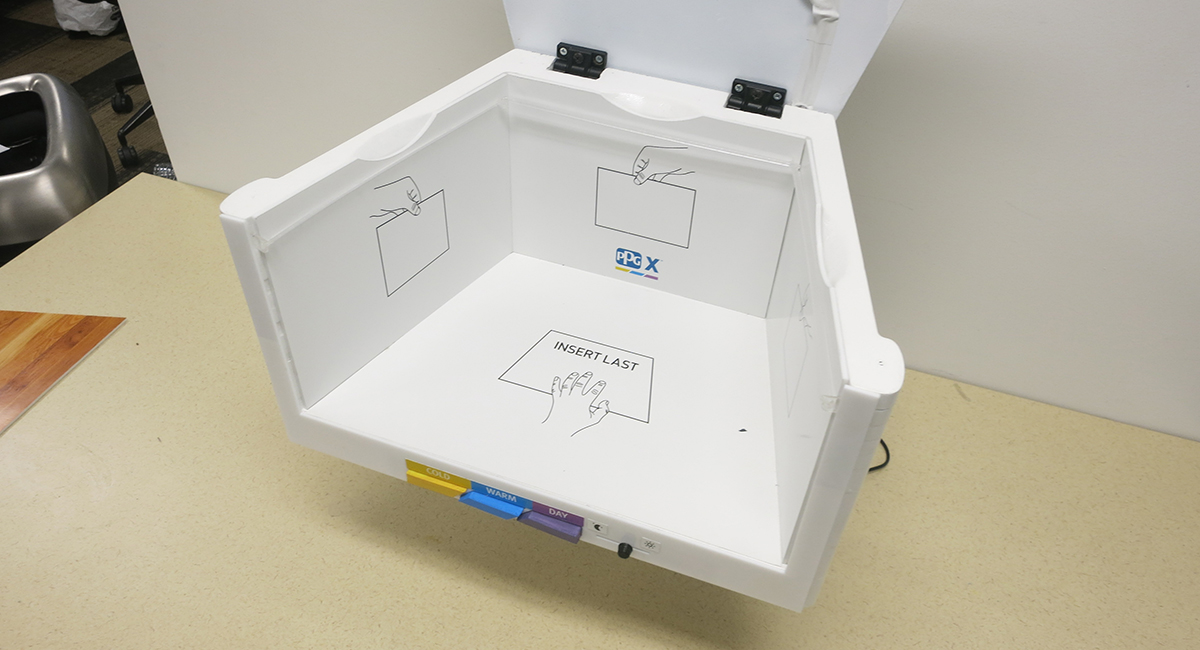
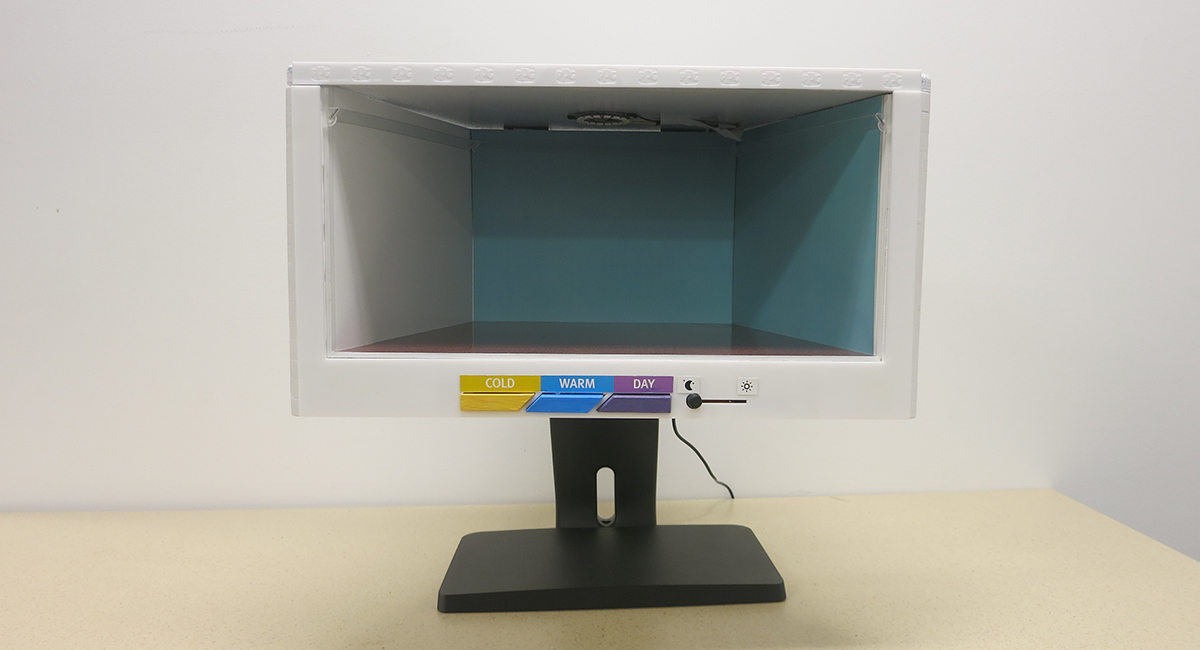
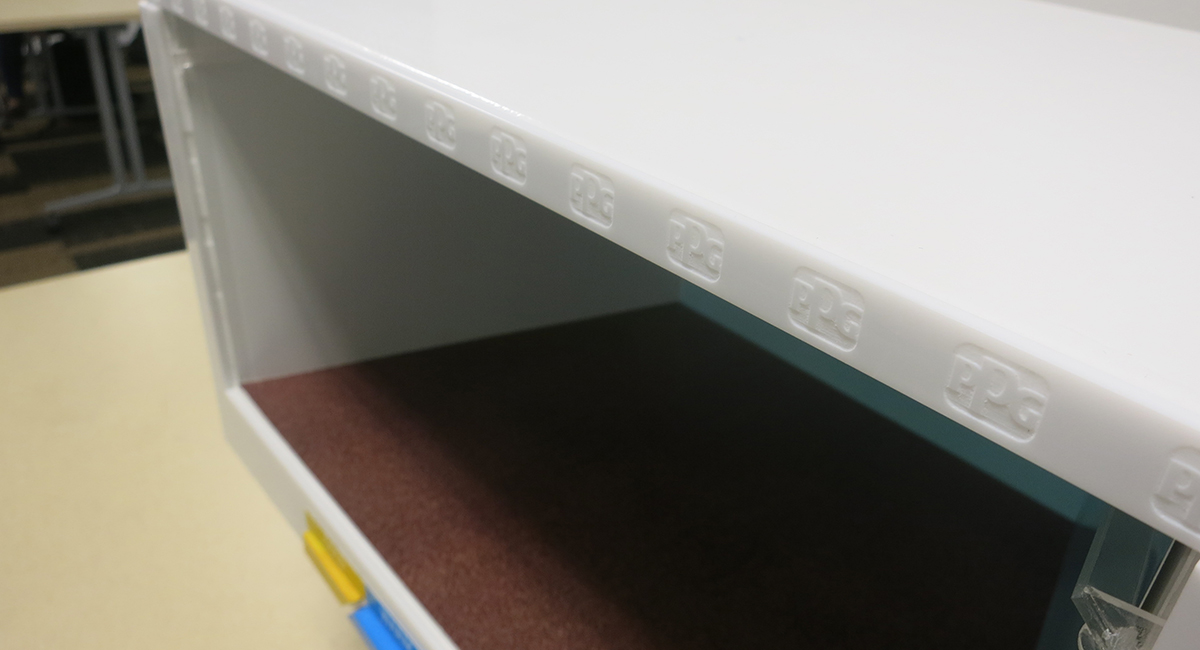
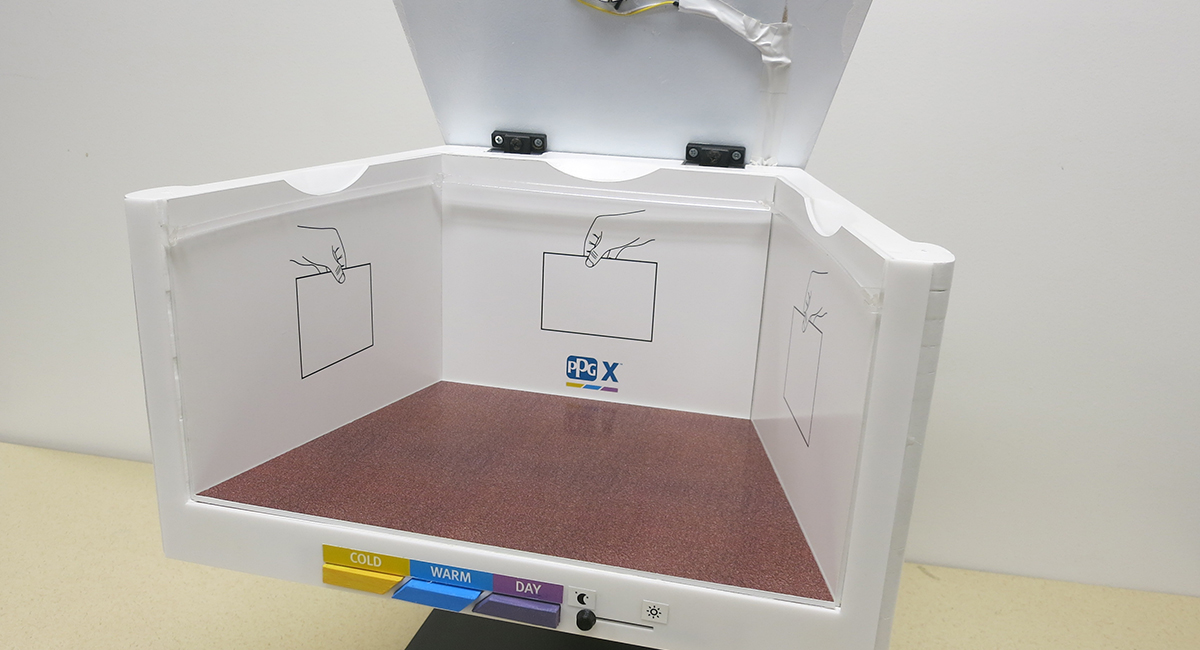
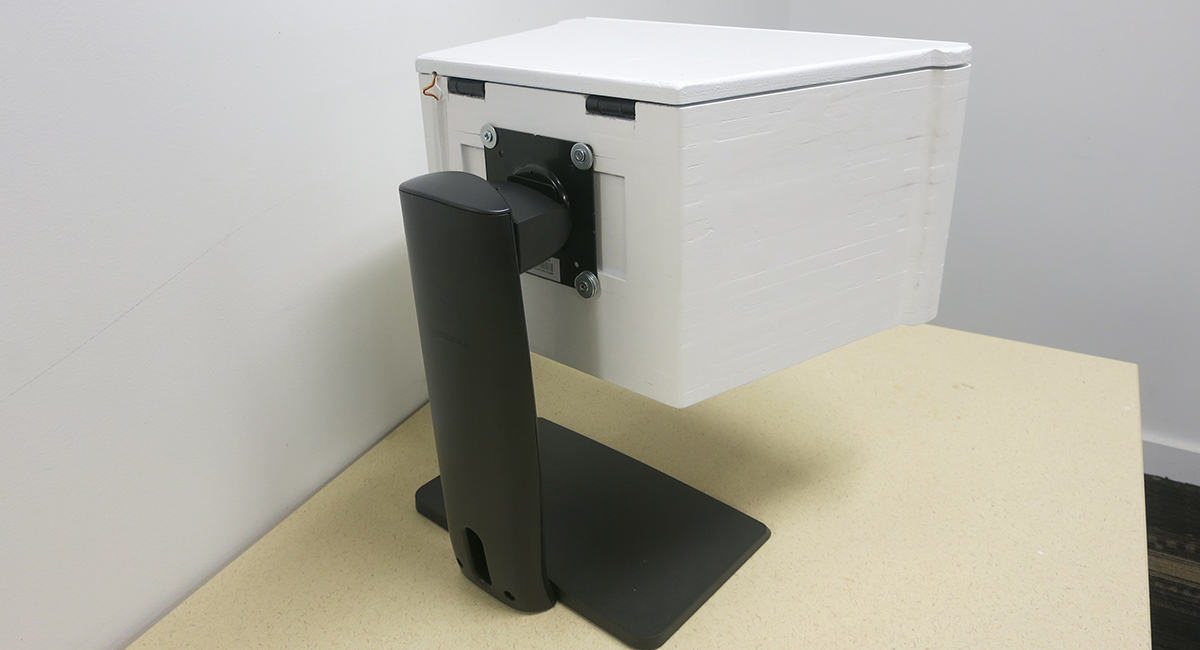
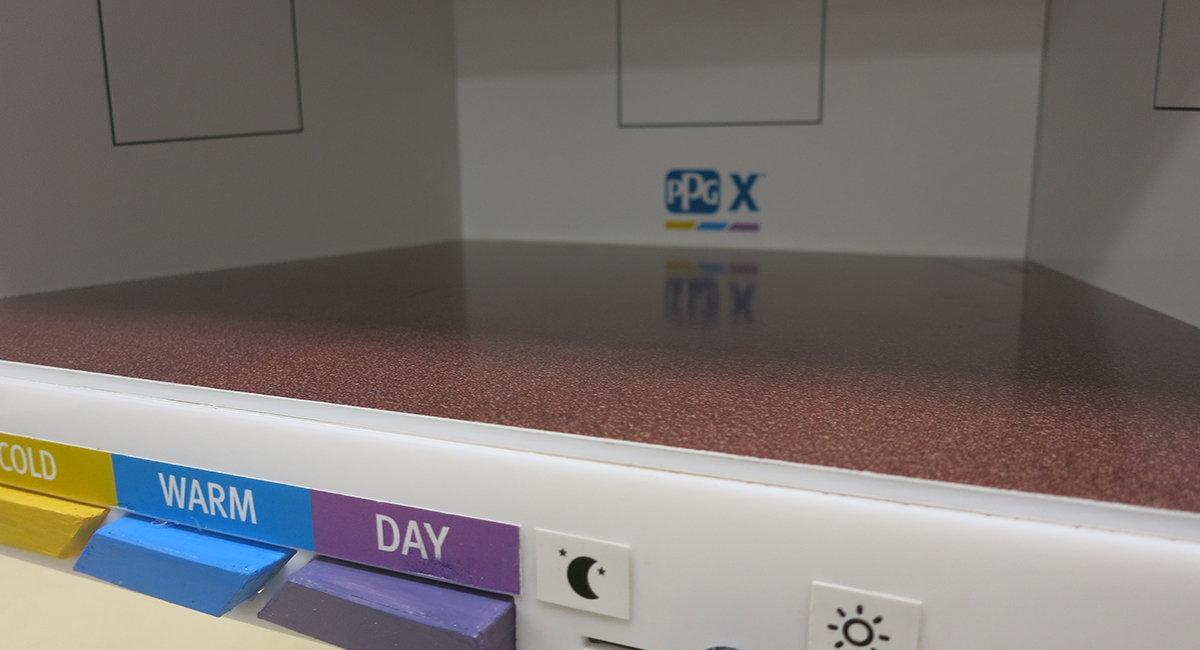
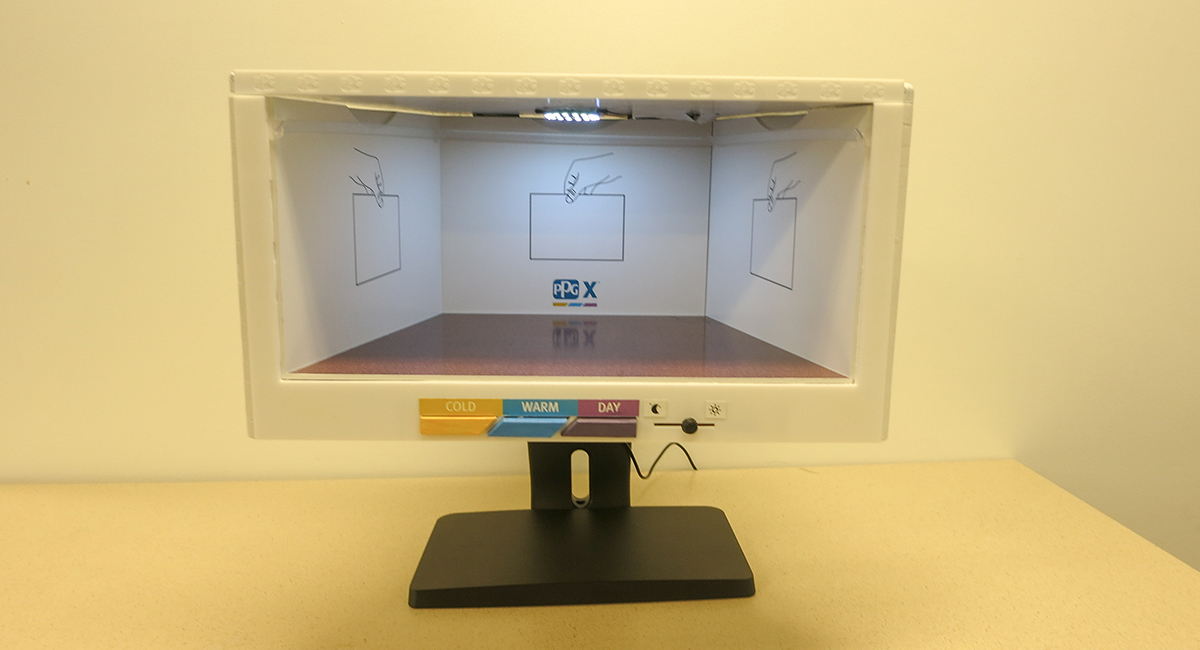

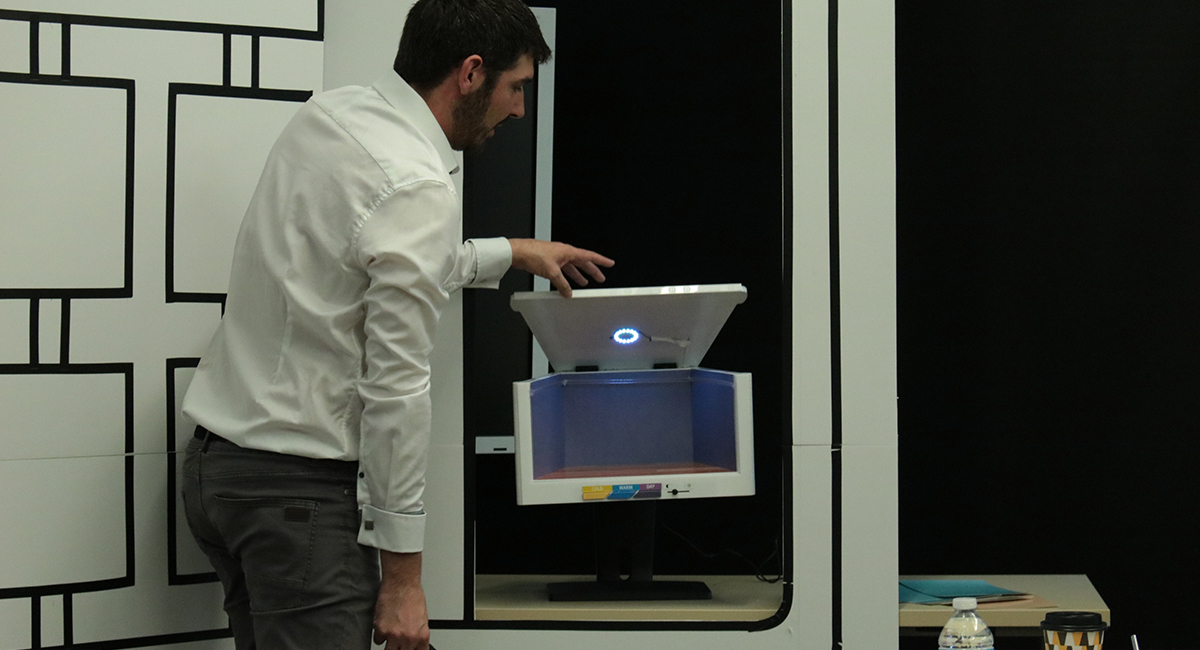
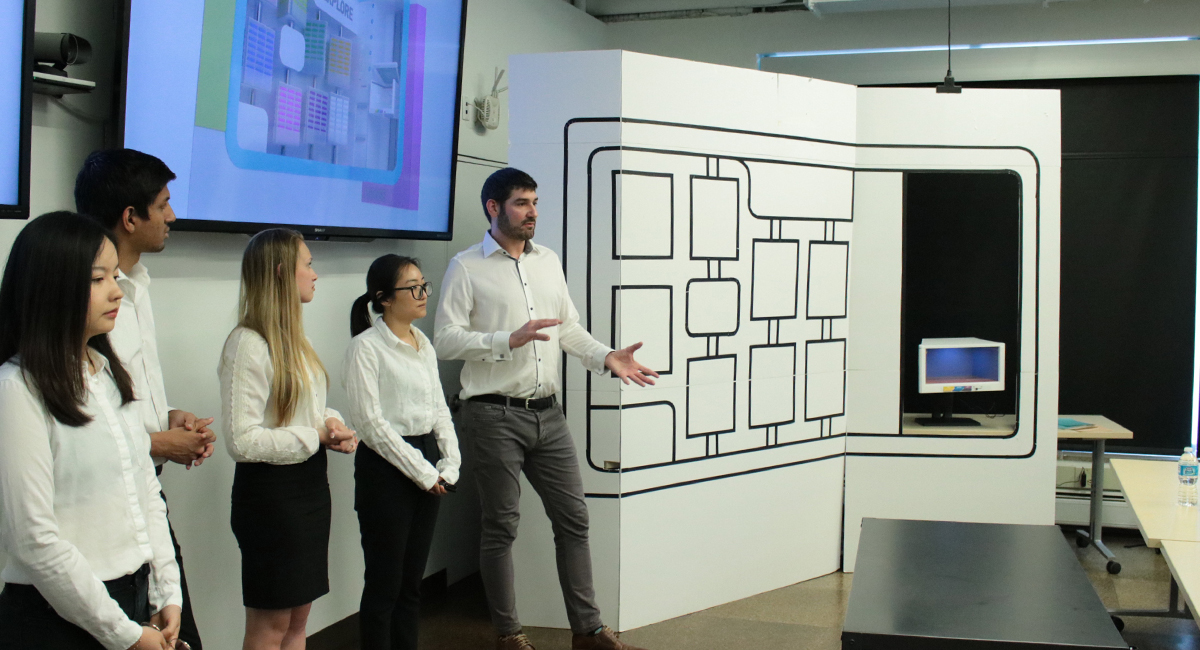
FINAL PRESENTATION



